Submitted by WA Contents
DARP built botanical garden in Colombia with self-supporting glazed volumes
Colombia Architecture News - May 19, 2022 - 10:55 11426 views
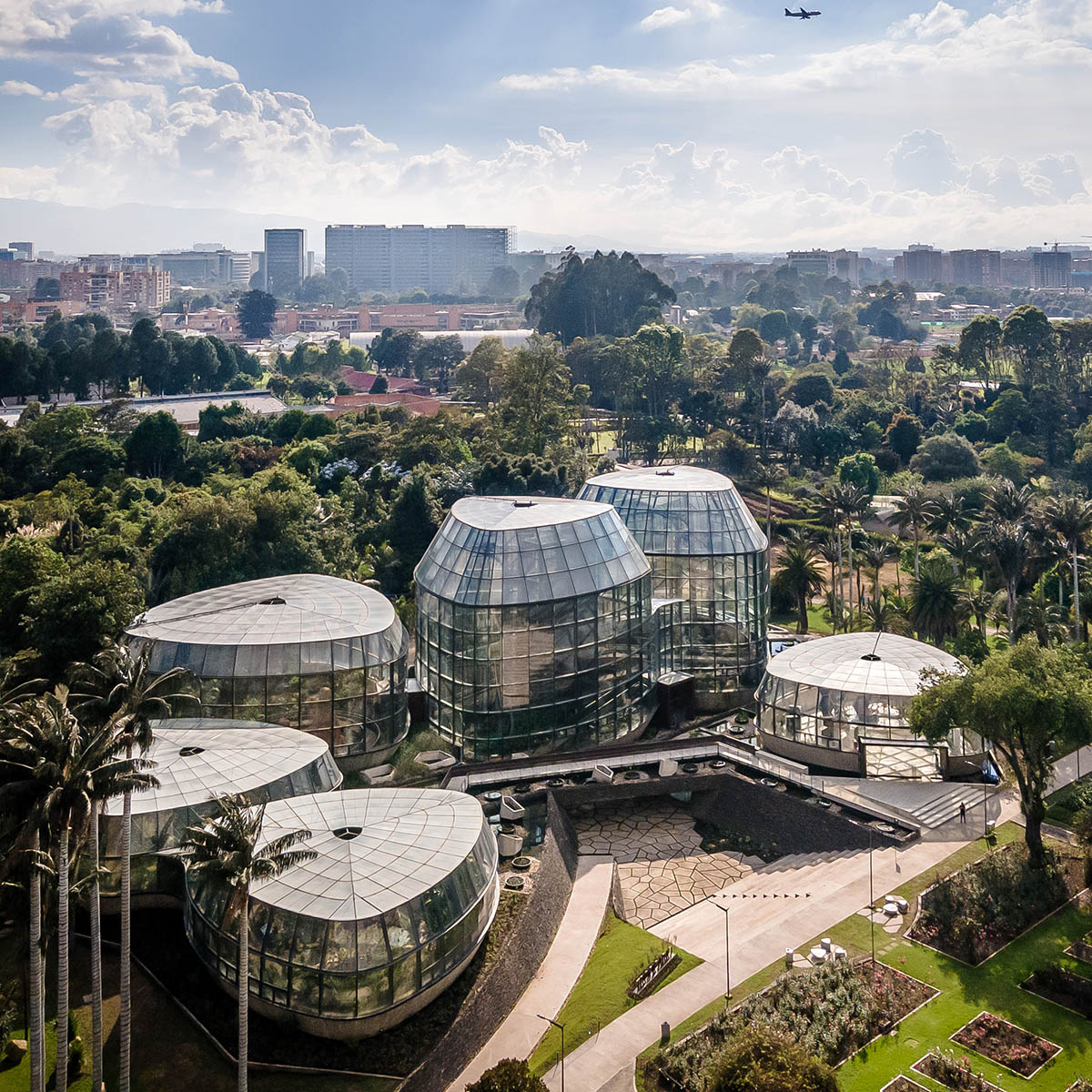
Colombian architecture practice DARP (De Arquitectura y Paisaje) has built a botanical garden in Bogotá, Colombia, made of six self-supporting glazed volumes that have been purposed for different functions.
Named Tropicario Bogotá Botanic Garden, the 3,787-square-metre complex is located in the centre of the country at 2,600 meters above sea level.
Developed as response to the deterioration of wetlands and ecosystems of the area, the new Botanical Garden of Bogotá aims to protect the area's most threatened ecosystems and offer an initiative for the "Nodes of Diversity".
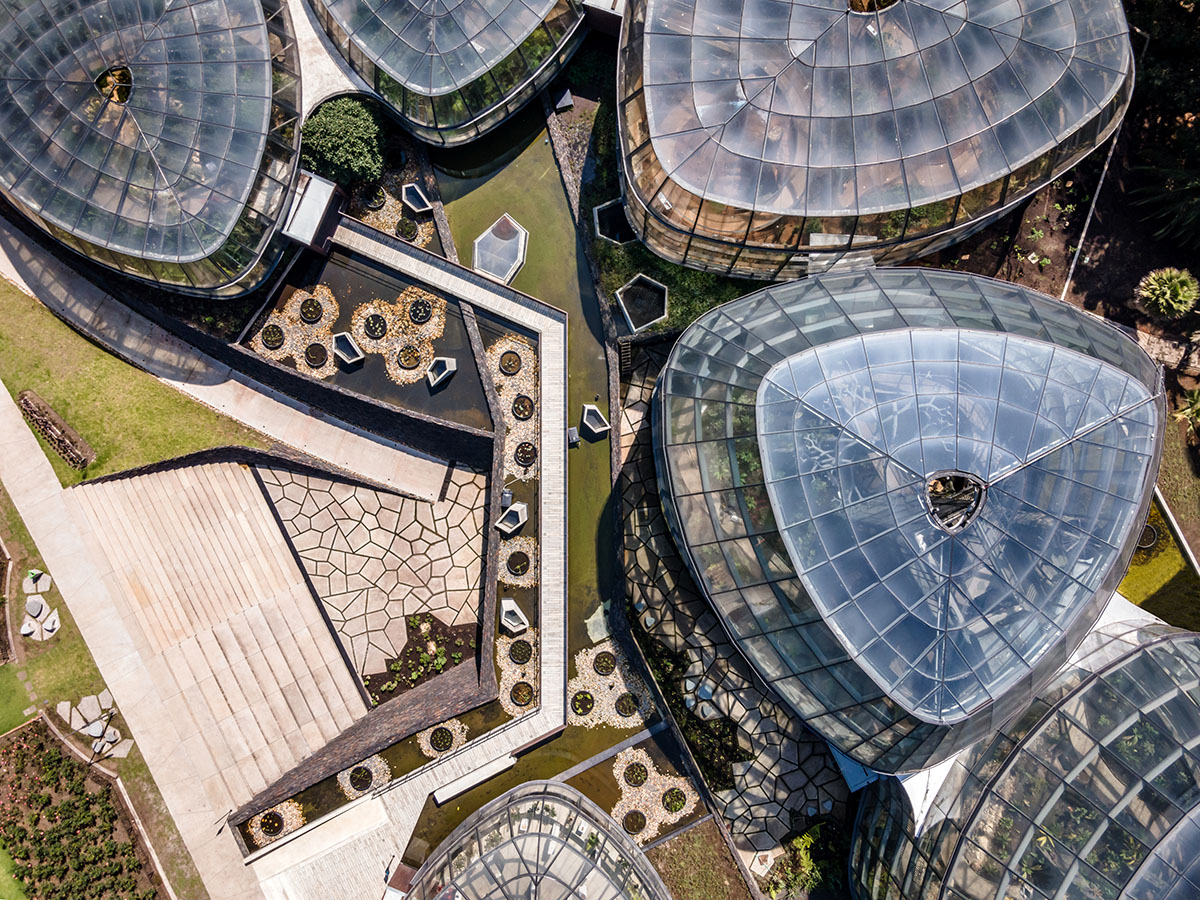
Comprising a group of six rounded-shaped volumes, each volume has a different program and function - the volumes are named as Humid Forest, Dry Forest, Special Collections, Useful Plants, Superpáramos and Biodiversity.
The six volumes are raised on concrete pillars driven 30 meters deep in the ground, located on the perimeter of the structures.
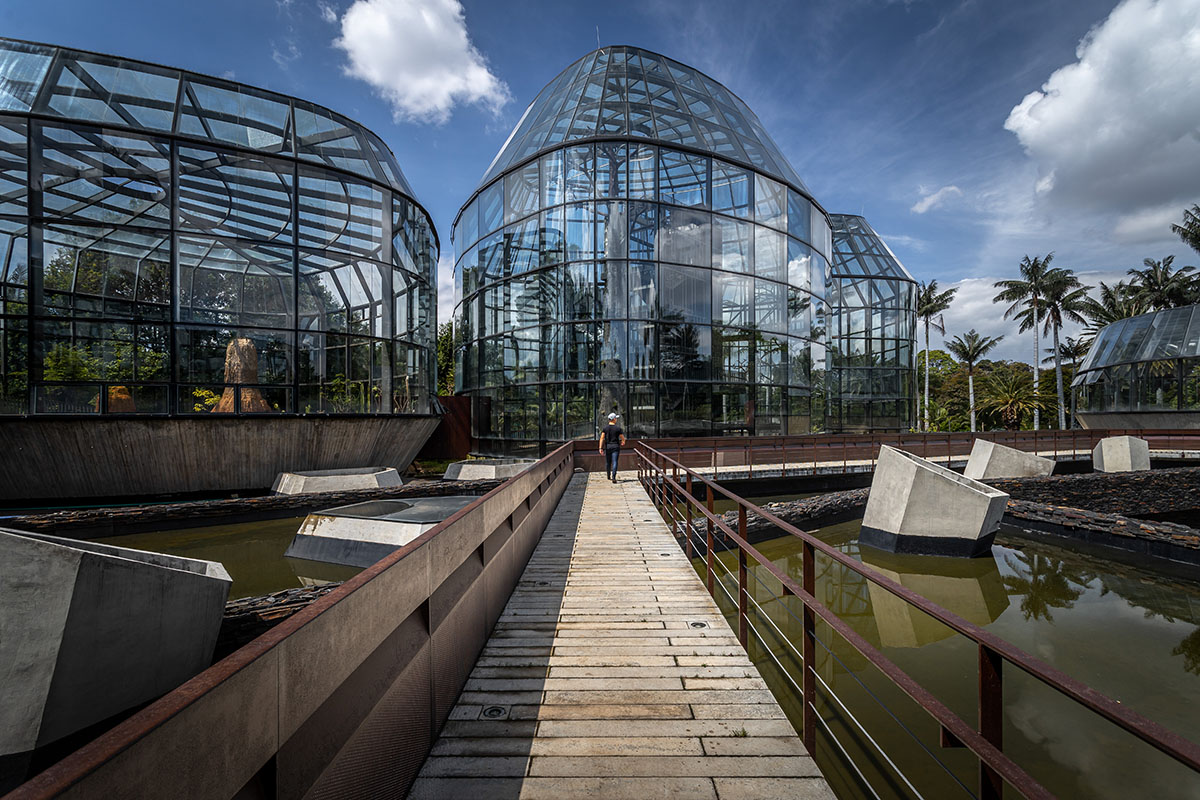
"The territory that the city occupies is known as the “The Bogotá Savanna”, a plateau that is part of the eastern mountain range of the Andes. The city is limited in the eastern area by a mountainous system known as the eastern hills and in the west by the Bogotá River," said DARP in its project description.
"About 20,000 years ago this territory was a large lake that joined the hills and the river."
"Today there are only some traces of this past lake, the city drained the vast majority of wetlands for its urban development, going from 50,000 hectares at the beginning of the 20th century, to only 727, leaving only 1.45% of the original area.
"This deterioration is largely due to widespread ignorance of the importance of wetlands in ecosystems," the office added.
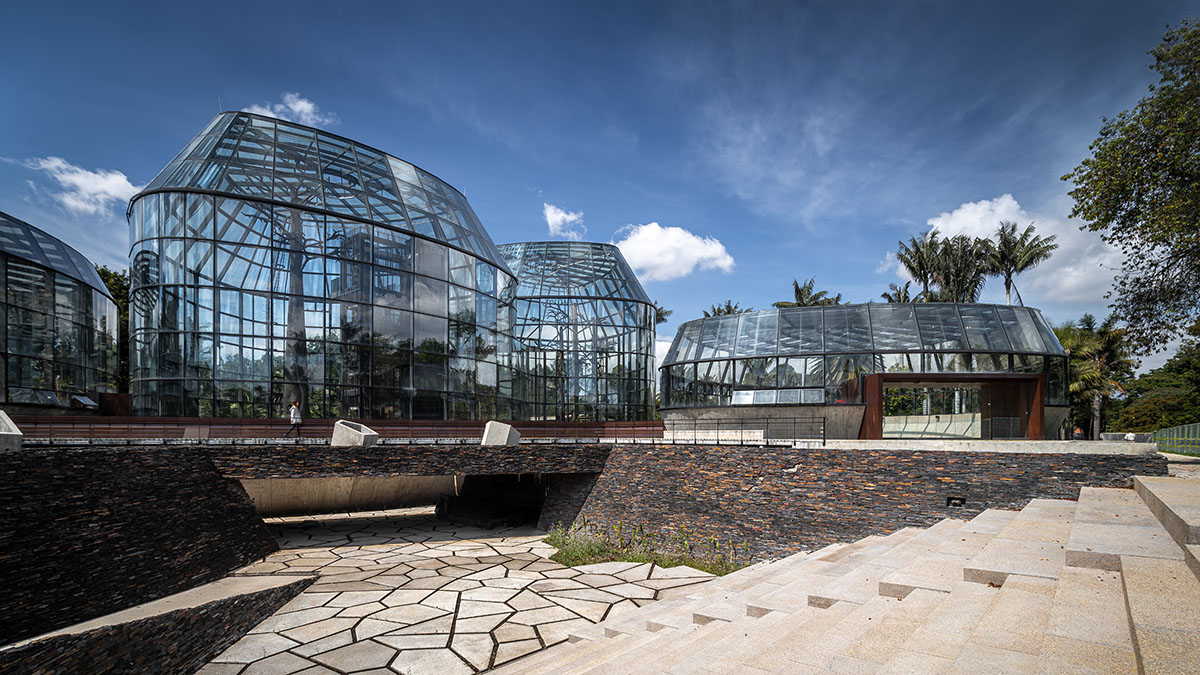
As the office emphasized, "the country's environmental wealth is contrasted by the high levels of deforestation and exploitation of raw materials; Illegal mining, extensive cattle ranching and indiscriminate logging are some of the biggest problems."
Due to the high rates of endangered species, Colombia takes place on the red list of the eight countries responsible for half of the deterioration of the planet, according to the office.
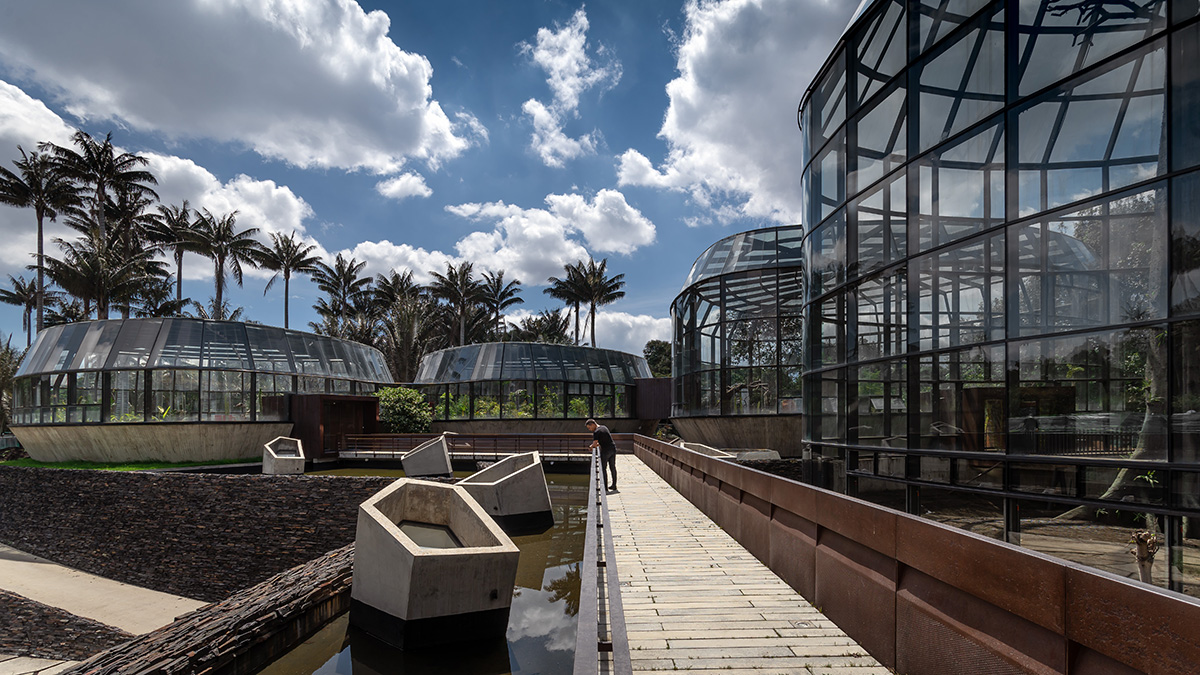
With this project, the studio devised a strategy for the conservation and protection of ecosystems by designing a clearly visible and manageable structures.
The studio describes the project as "an ambitious project that seeks to carry out a new botanical expedition throughout different areas of the country and that will allow protecting and valuing some of the most threatened ecosystems in the Colombian territory."
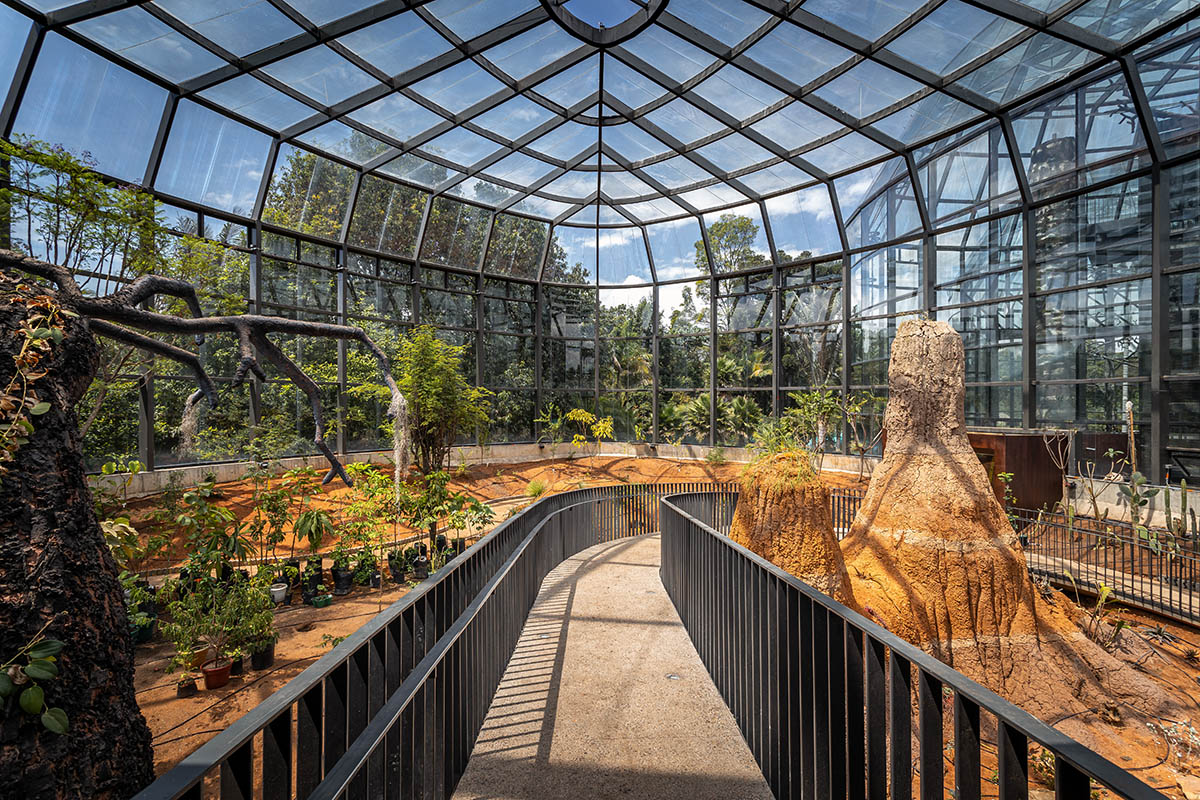
The main infrastructure of the plan is called "El Tropicario". The space is used as an exhibition space for promoting the results of these expeditions. The project is located on the footprint of an former structure, which was in a high state of deterioration.
According to the studio, the conservation of the wax palms surrounding the implantation site was a key design element for the project. It is known as a species of very slow growth, declared a national tree and in danger of extinction.
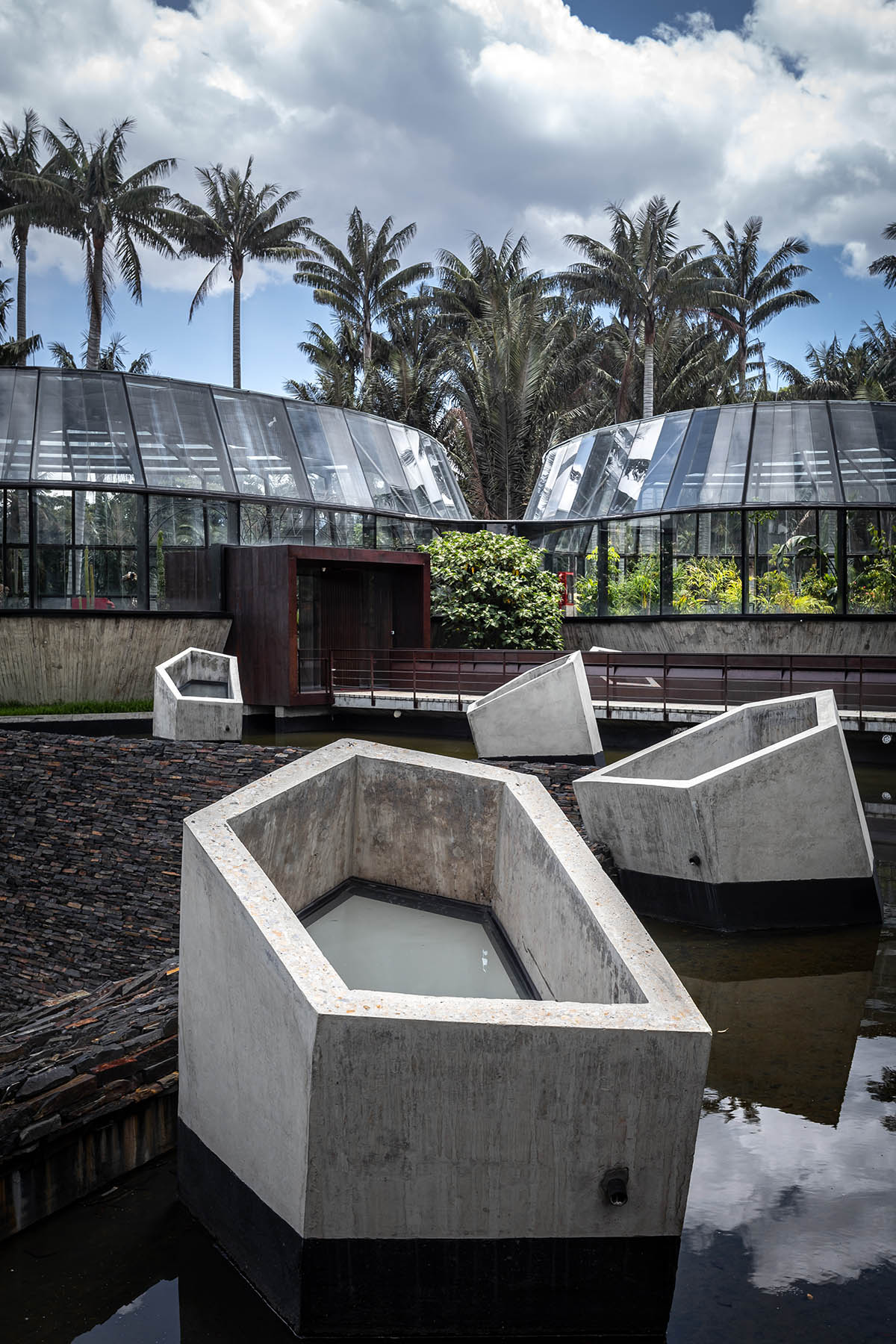
"These palms live for more than 100 years, reaching heights of up to 70 meters," added the studio. "There are more than 70 adult palms of this type around El Tropicario. This raised the need to use a system of flexible forms, in order not to affect the trees."
Another important aspect of the the project was to integrate "El Tropicario" into the structure of the Botanical Garden and the project should have been strong educational and vocational outreach.
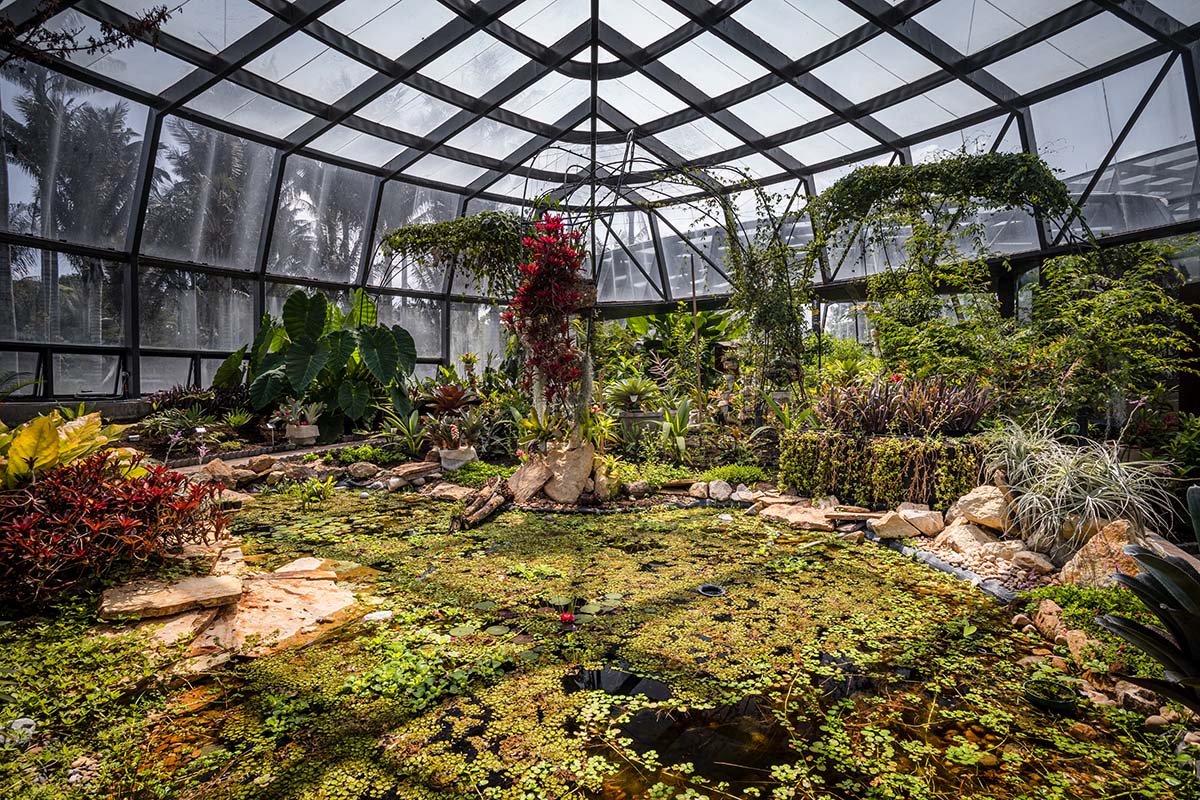
El Tropicario is designed as part of the general route of the Garden and the general architecture is enhanced with walking and experiencing, according to the studio, "it couldn't be thought of as a building closed by walls."
"The starting question was: How to relate the project to the landscape of the Bogotá Savannah?," the office added.
"This question would require the project to function as a space to disseminate and teach about the environmental values and threats that this territory faces, as a way of contributing to the culture of the local landscape."
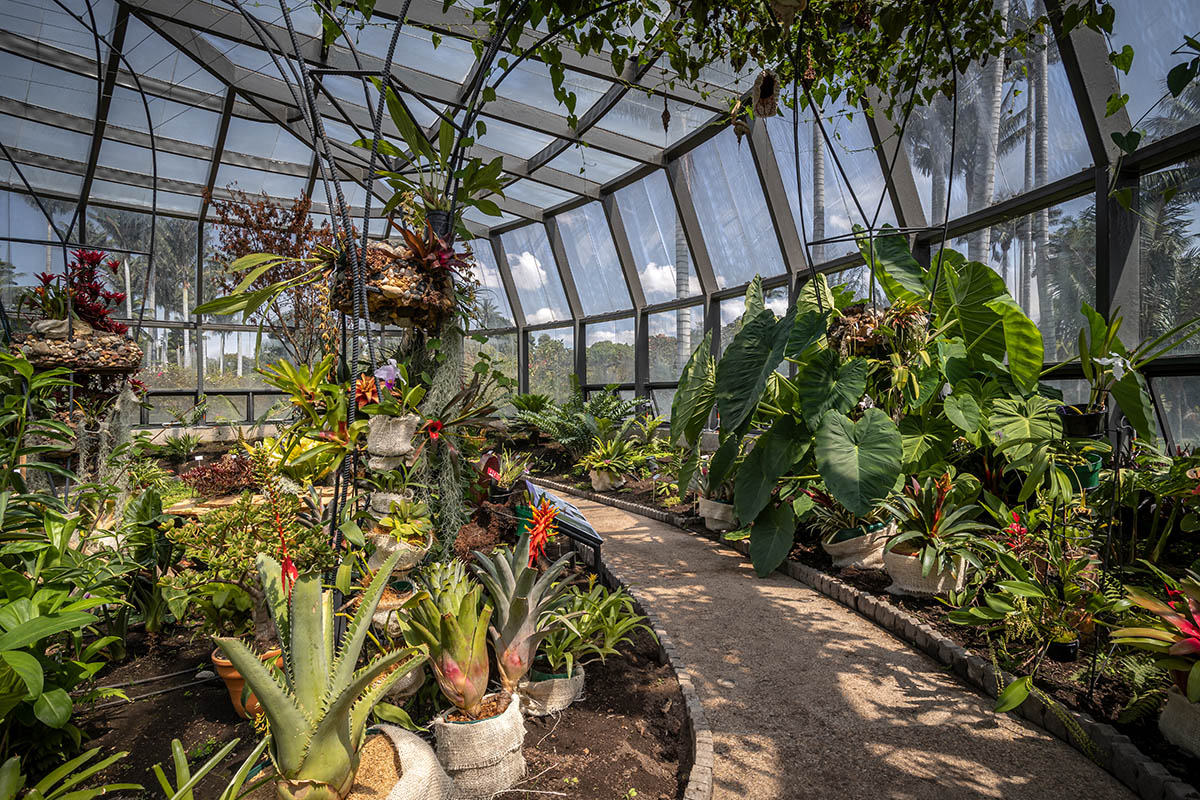
To achieve this, the studio tried to understand the building as a system of related parts that make up a whole.
Conceptually, the different areas of the program function as floating spaces, within a wetland, which is the ecosystem of the Bogotá Savanna, a high plain in the southwestern part of the Altiplano Cundiboyacense in the center of Colombia.
To design these structures, the studio takes cues from the references of amphibian architecture developed by pre-Hispanic engineering (Chinampas, Camellones, Floating Islands).
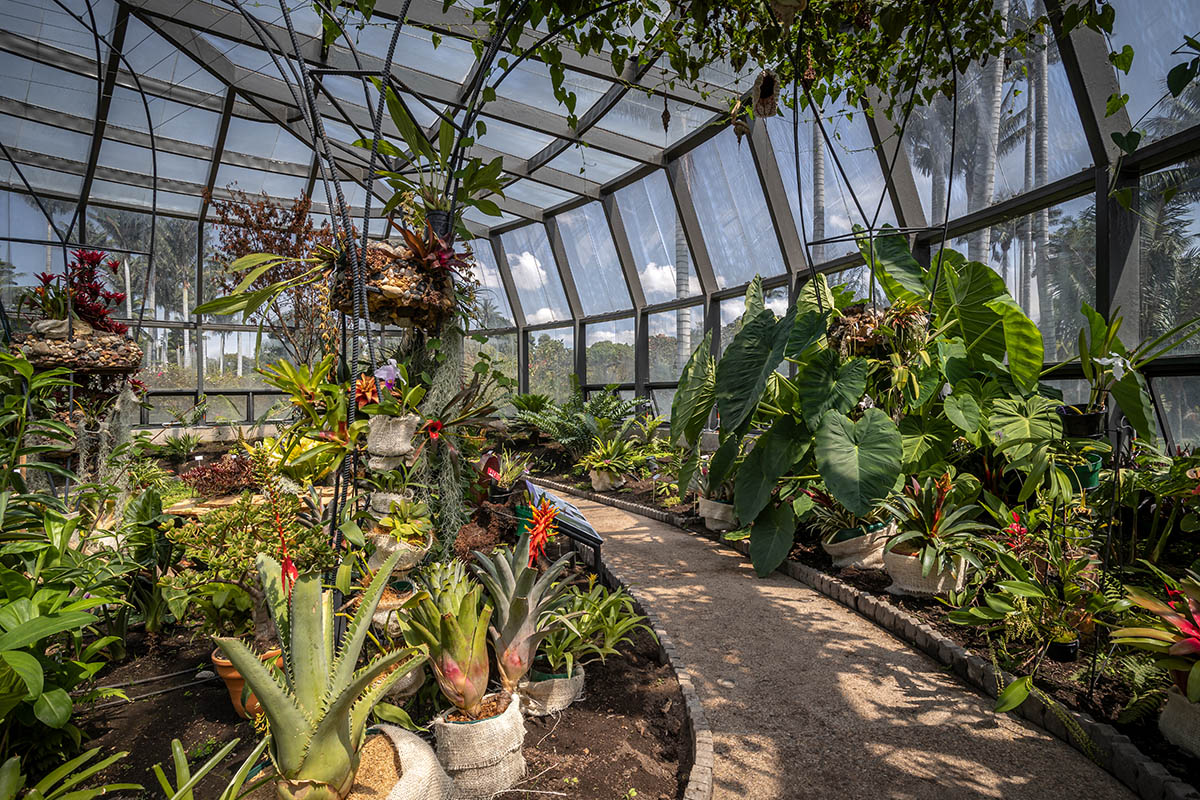
Six glazed volumes act as "floating" modules, articulated through an artificial wetland, a collection proposed by the design team from the competition phase.
Inside the botanical garden, the studio implemented passive temperature control systems that don't require mechanical ventilation systems. The team used glass on the façades with different thicknesses and filters and automated systems, allowing some areas to control the temperature.
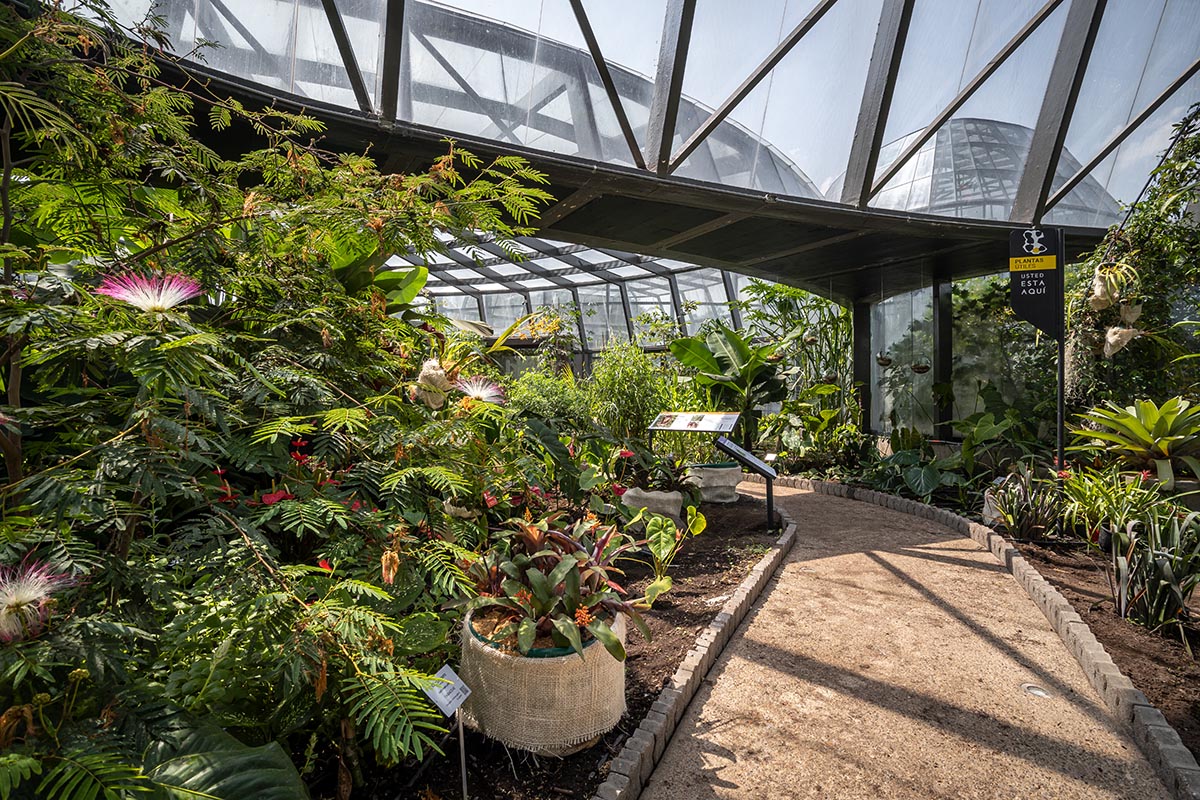
The studio conceived each structure as a water receiver, with an oculus incorporated in the upper part to capture rainwater, leading it to lakes located within the space, passing it further to the artificial wetland in the perimeter, which in turn works as a large reservoir of water that is used for irrigation systems for vegetation, thus creating a closed cycle.
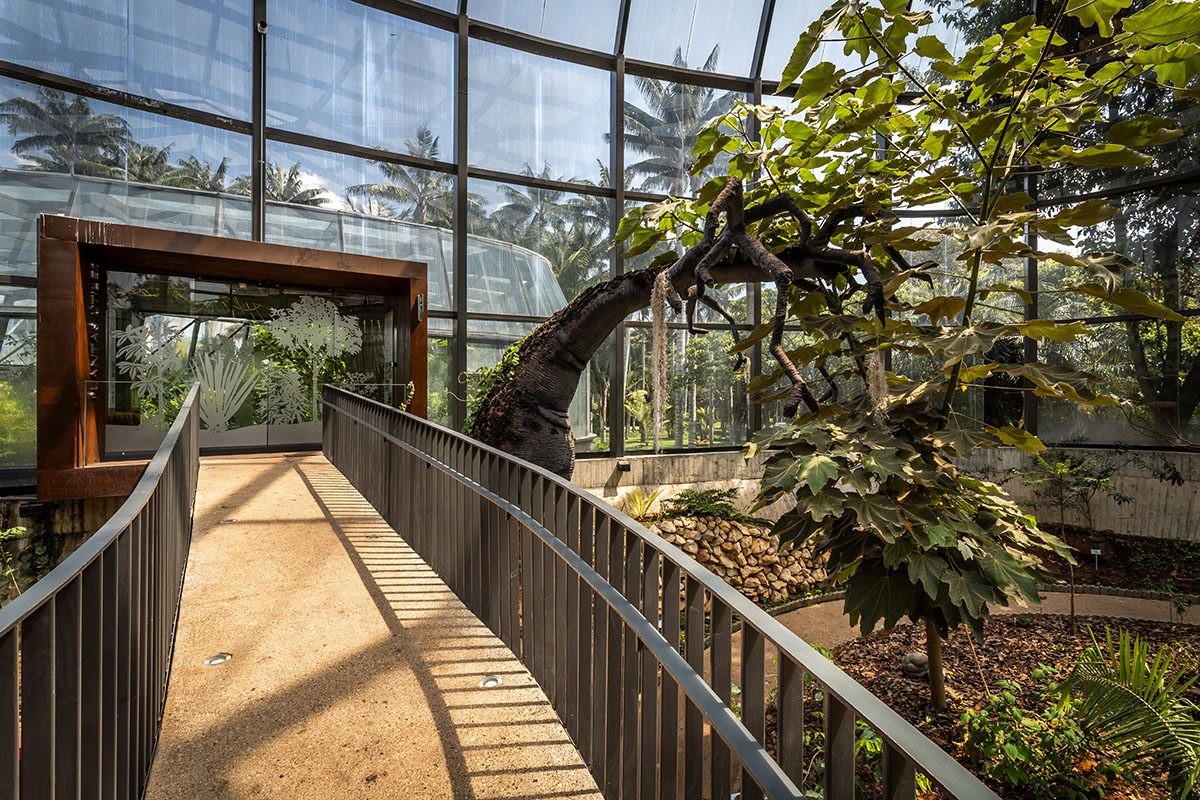
The volumes contain a system of "locks", as transitional spaces between the different collections allow the visitor to move from one space to another, preserving the temperature conditions required for each space.
Each lock has the required technical controls and emergency exits. The environmental emergency that our planet is experiencing makes it necessary for the public project to be imagined using urban and environmental logics in a symbiotic way, in order to safeguard the shared environmental heritage.
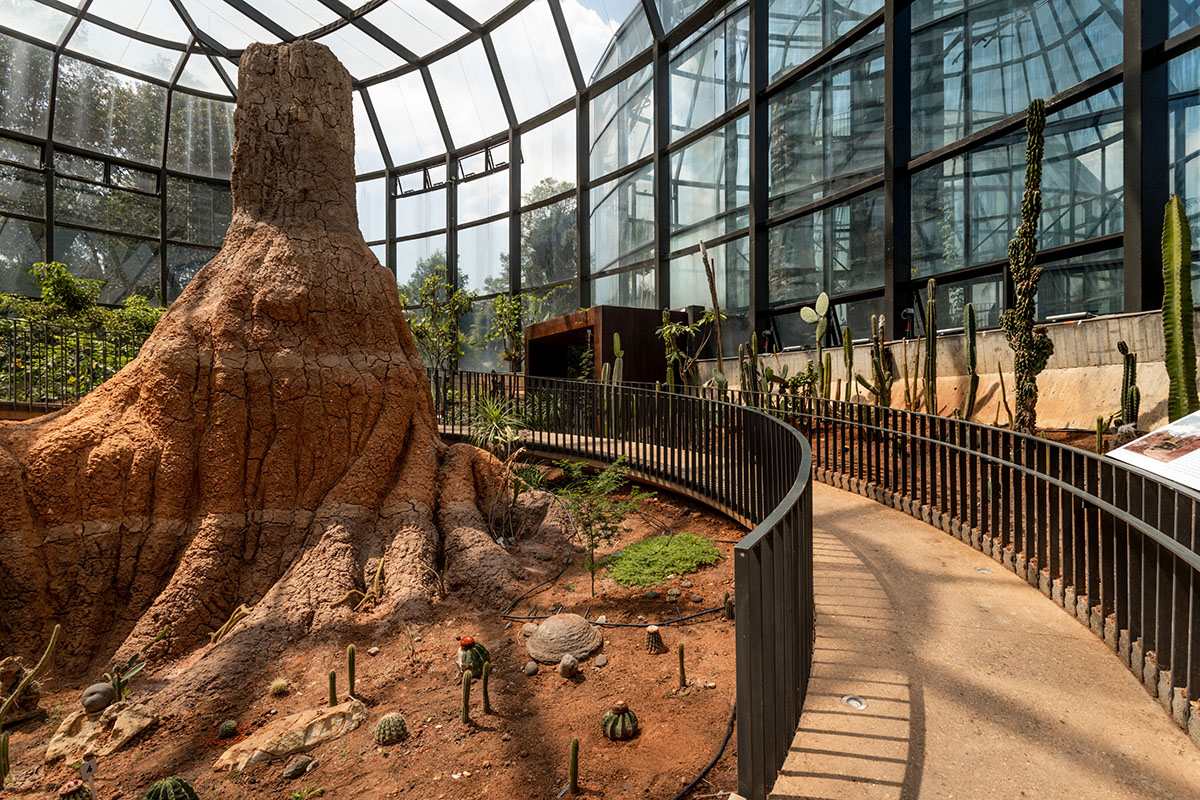
The new Botanical Garden emerges as a commitment to building a landscape culture where, from the local context, a message of global urgency is transmitted.
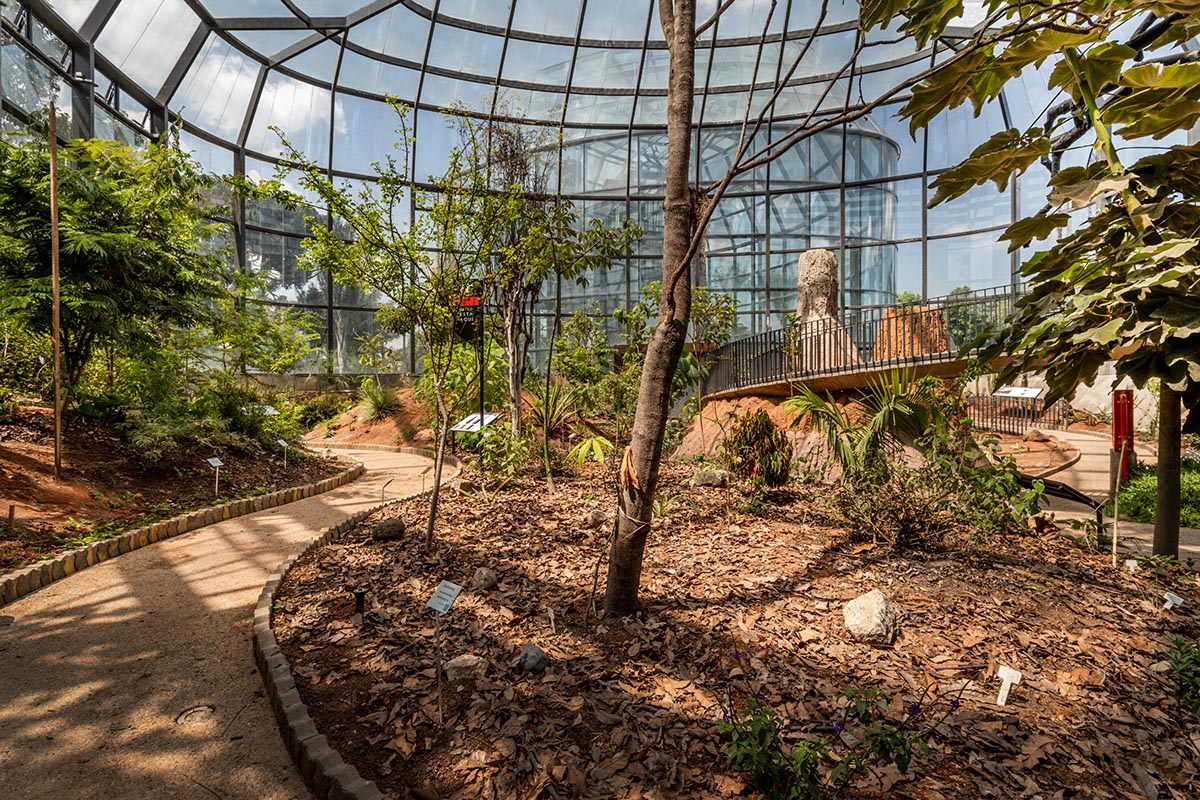
Using concrete pillars driven 30 meters deep in the ground was derived from an objective of the fact that it was important to free the soil inside the spaces in order to have areas for deep seeding.
Upon reaching the surface, on these pillars, the concrete sloping walls were emptied, functioning as a support for the metal structure, allowing it to serve as "flowerpots" inside the spaces.
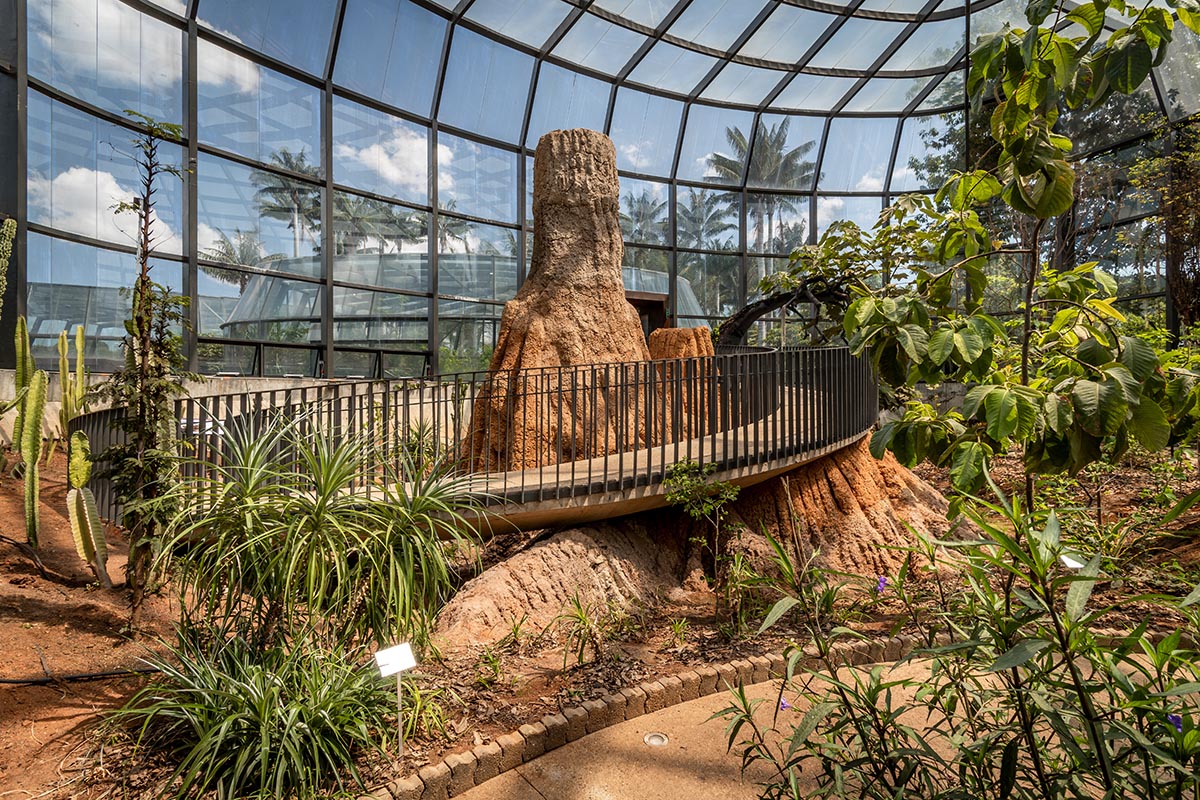
Upon reaching the surface, on these pillars, the concrete sloping walls were emptied, functioning as a support for the metal structure, allowing it to serve as "flowerpots" inside the spaces.
Inside these spaces part of the earth could be maintained for plants and could enable changes in the topography that allow organizing the planting areas of the different species.
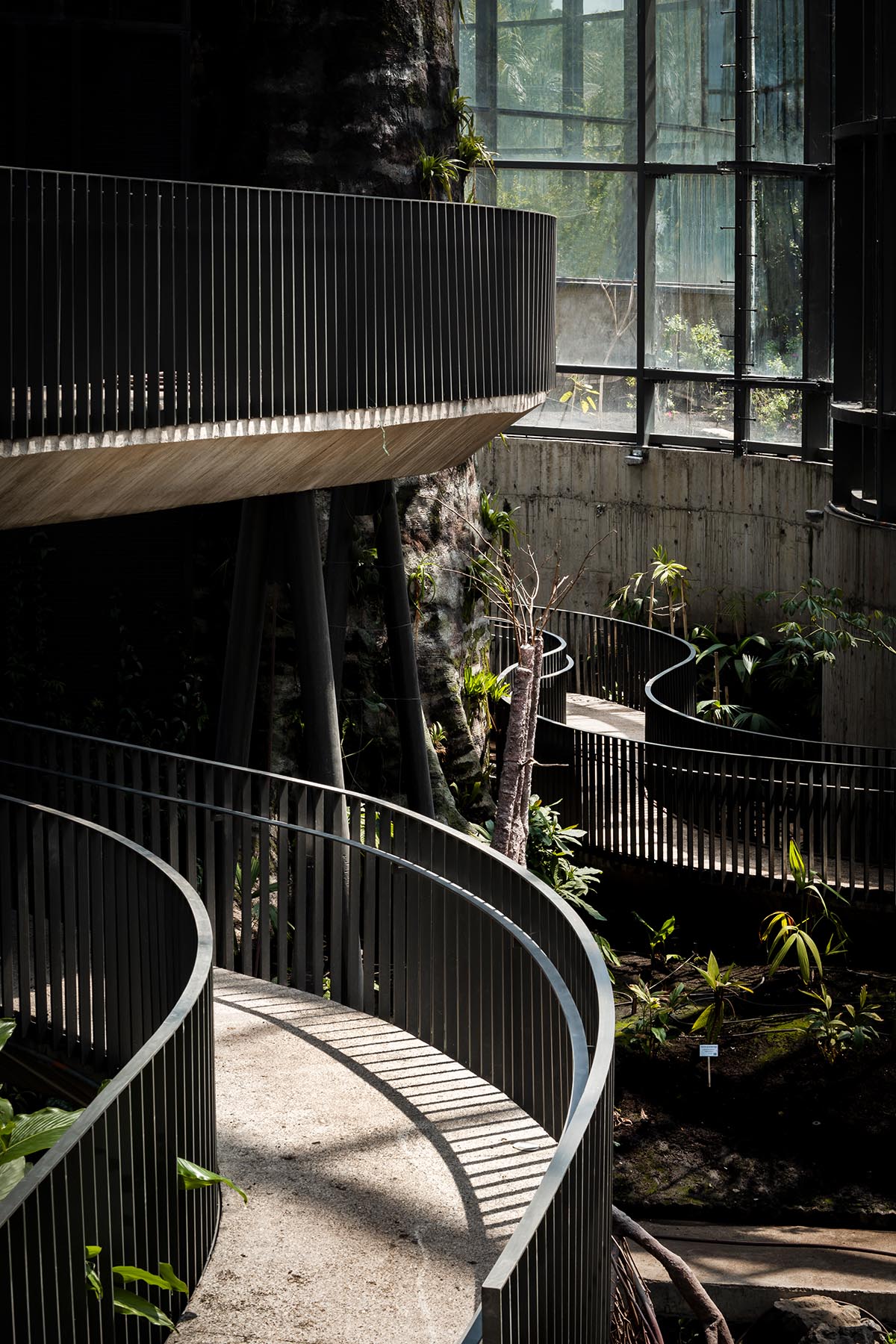
On the reinforced concrete walls, metal pillars, measured by 30cm x 10cm, are installed, located on the perimeter of each space, so that they can form "structural baskets" as a self-supporting structure, allowing column-free spaces.
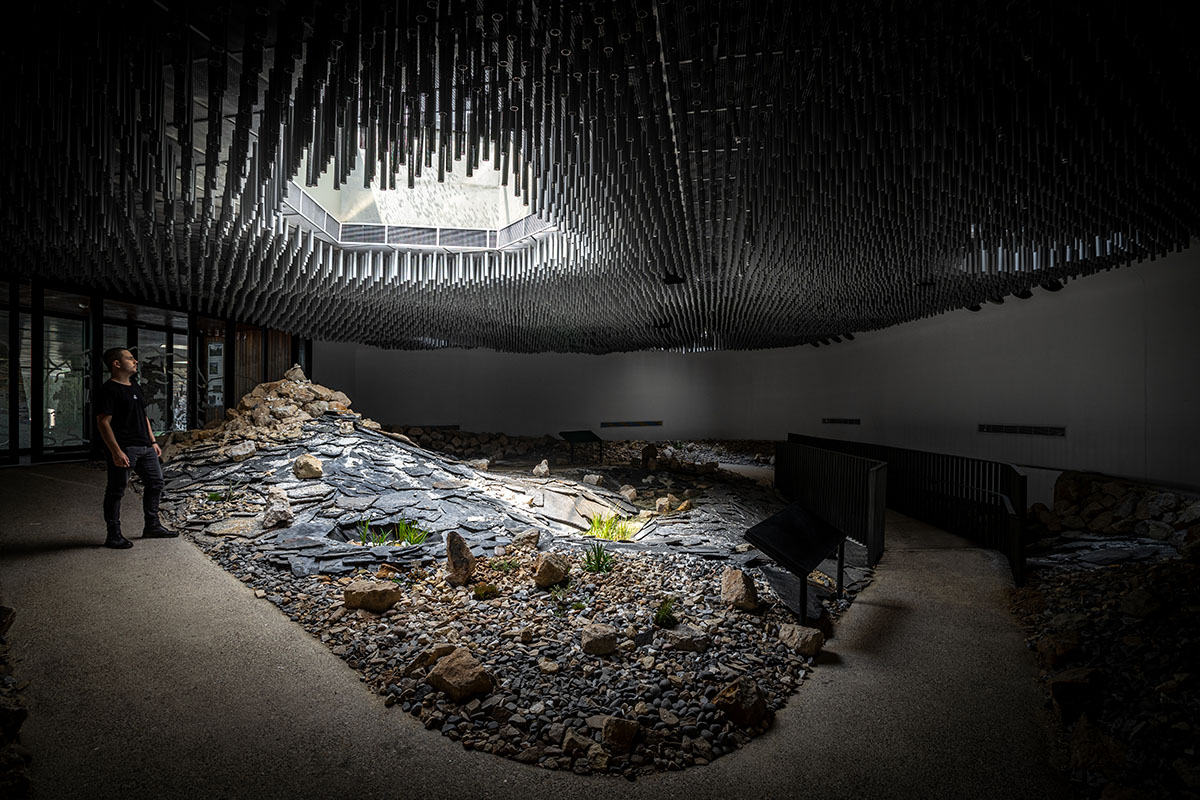
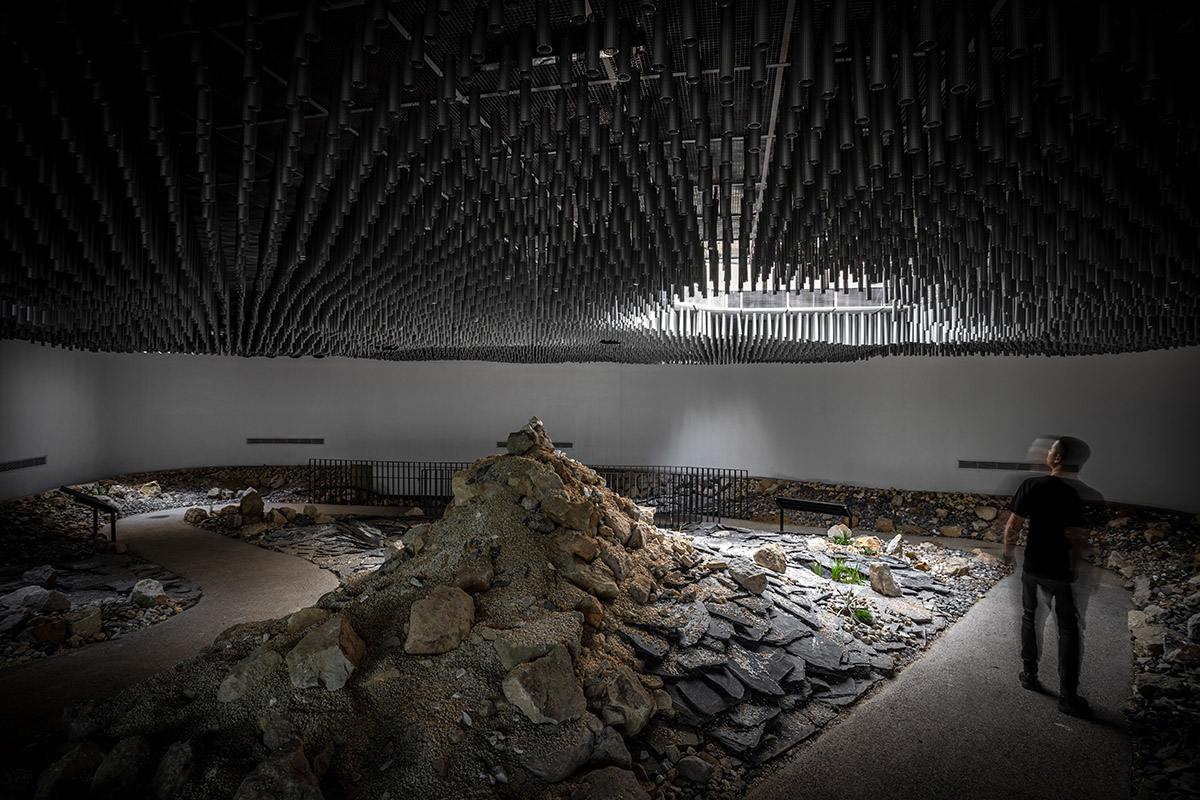
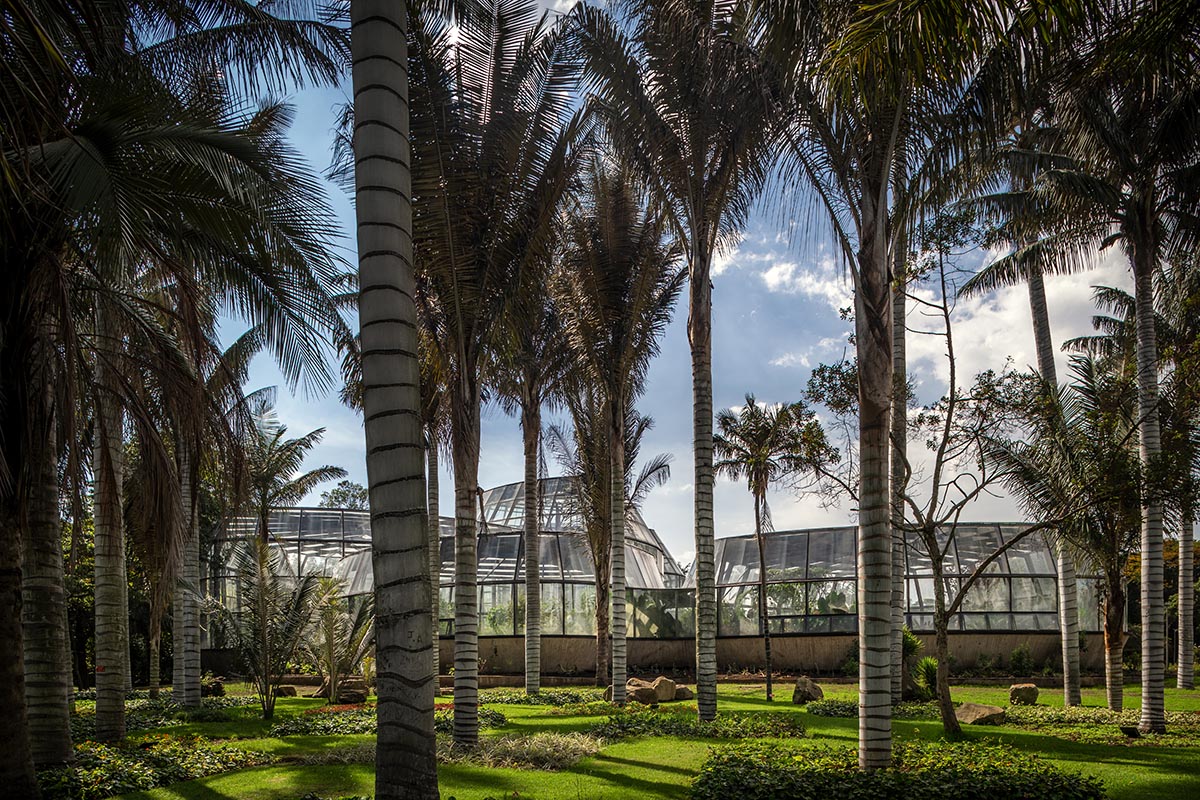
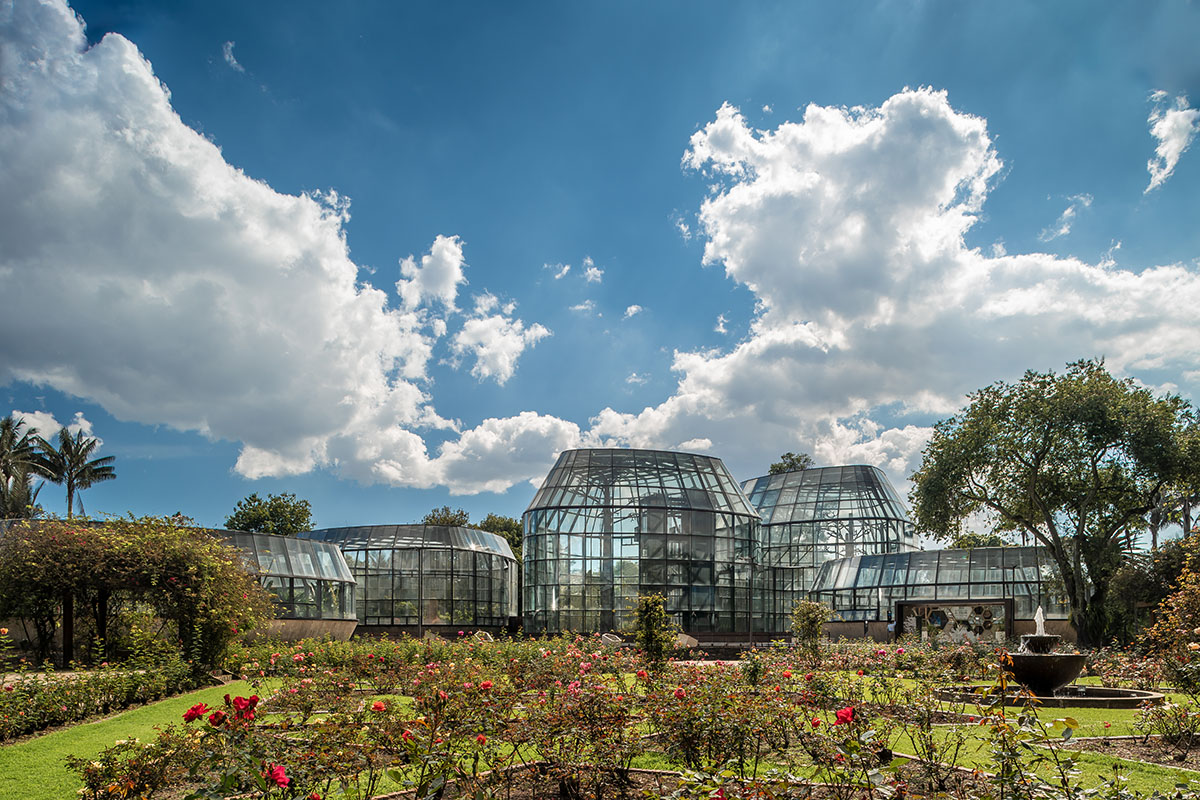
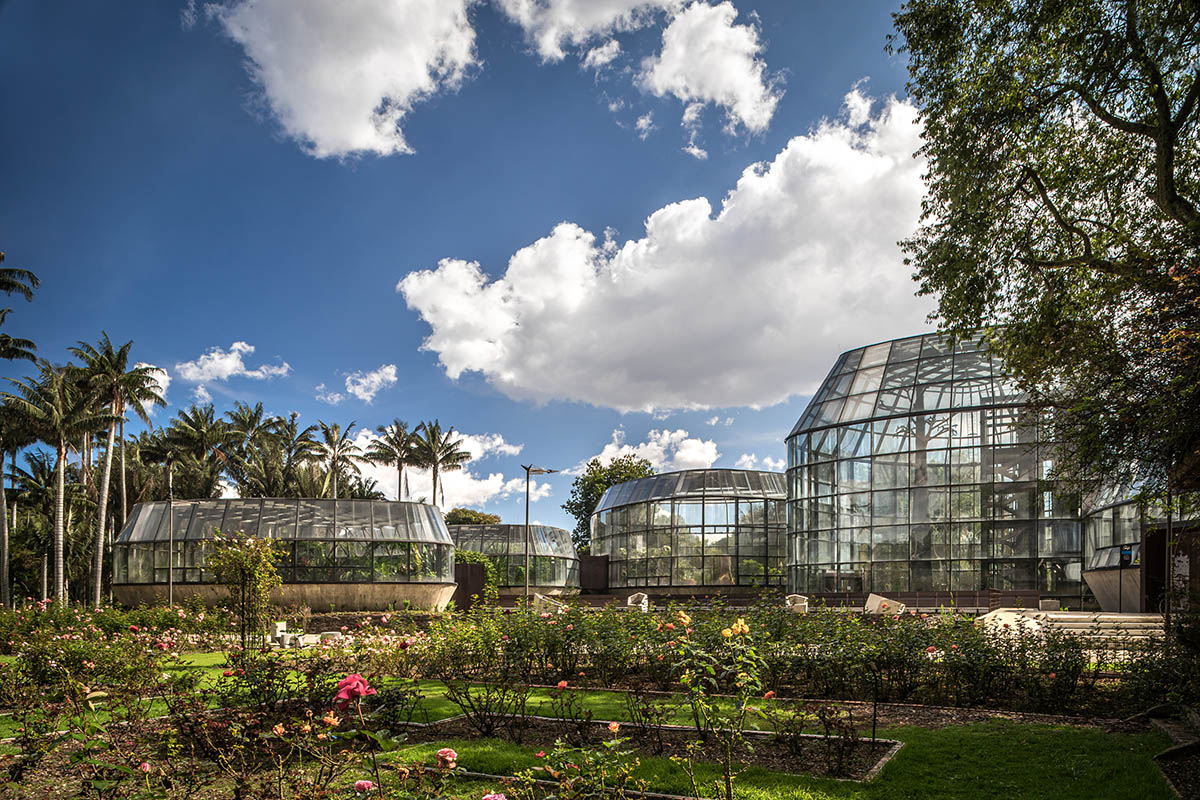
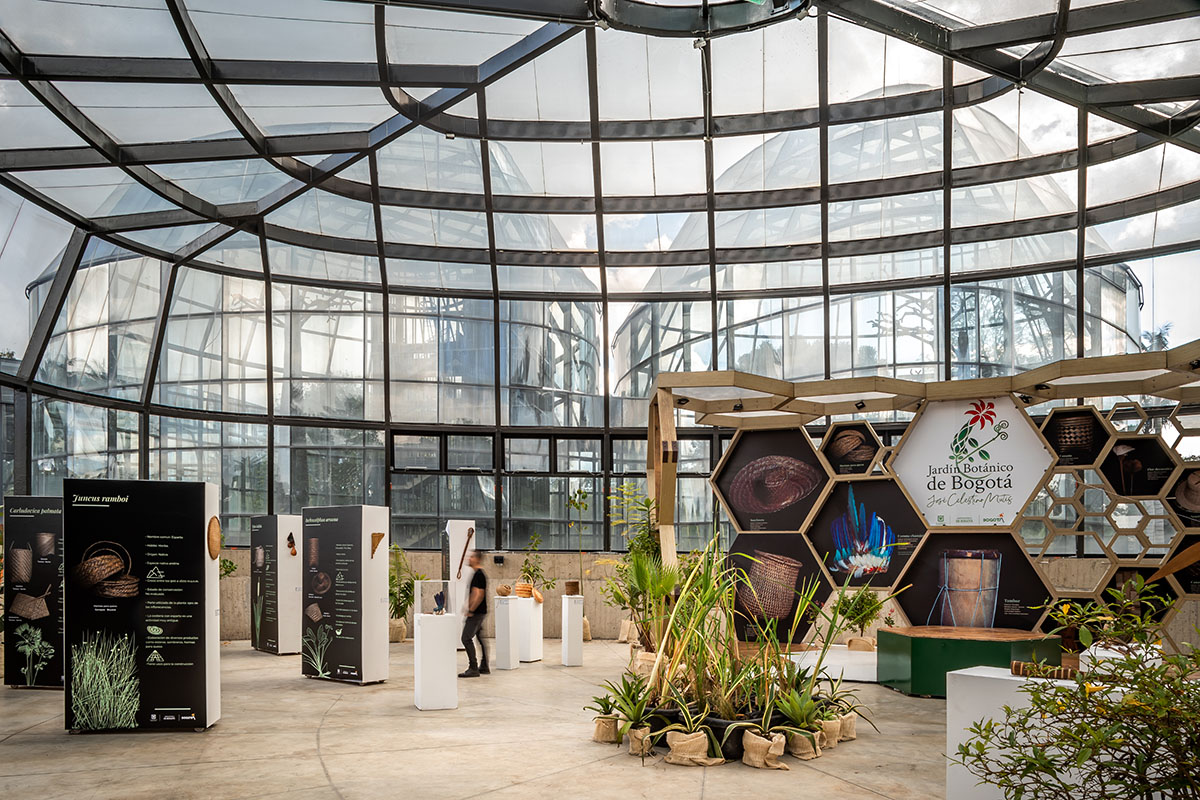
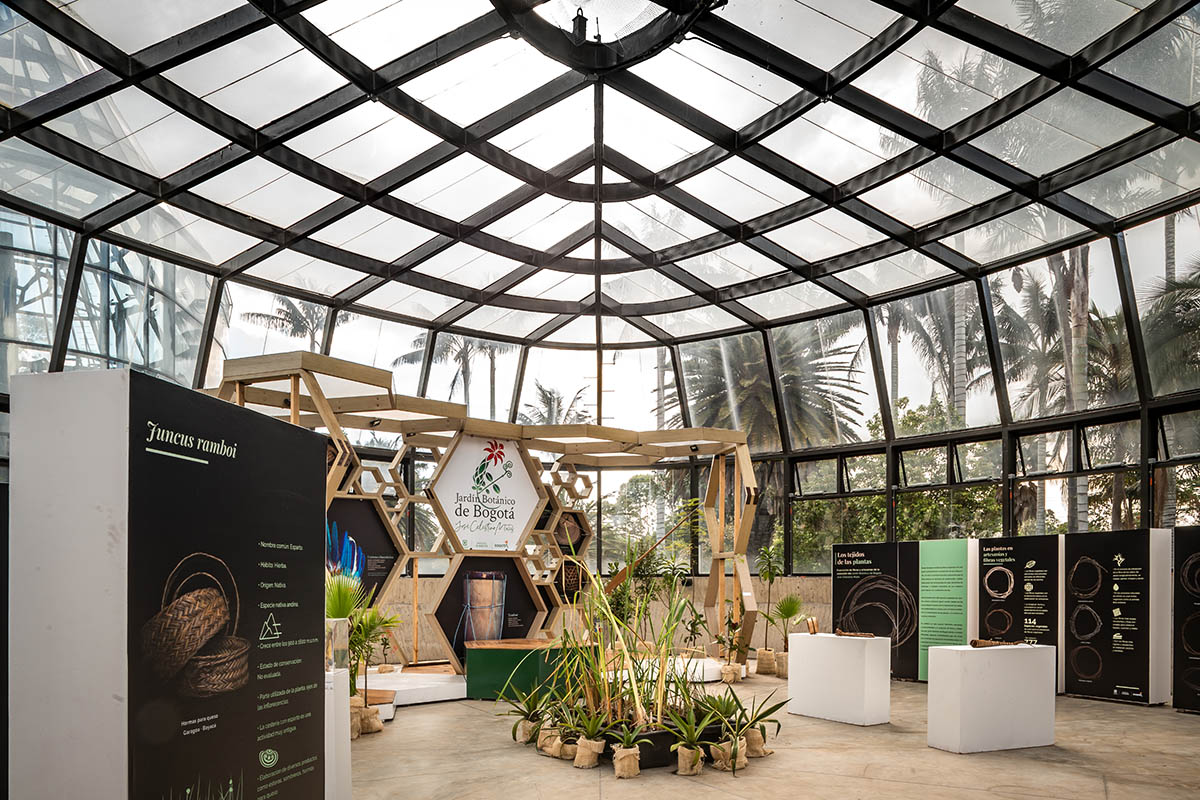
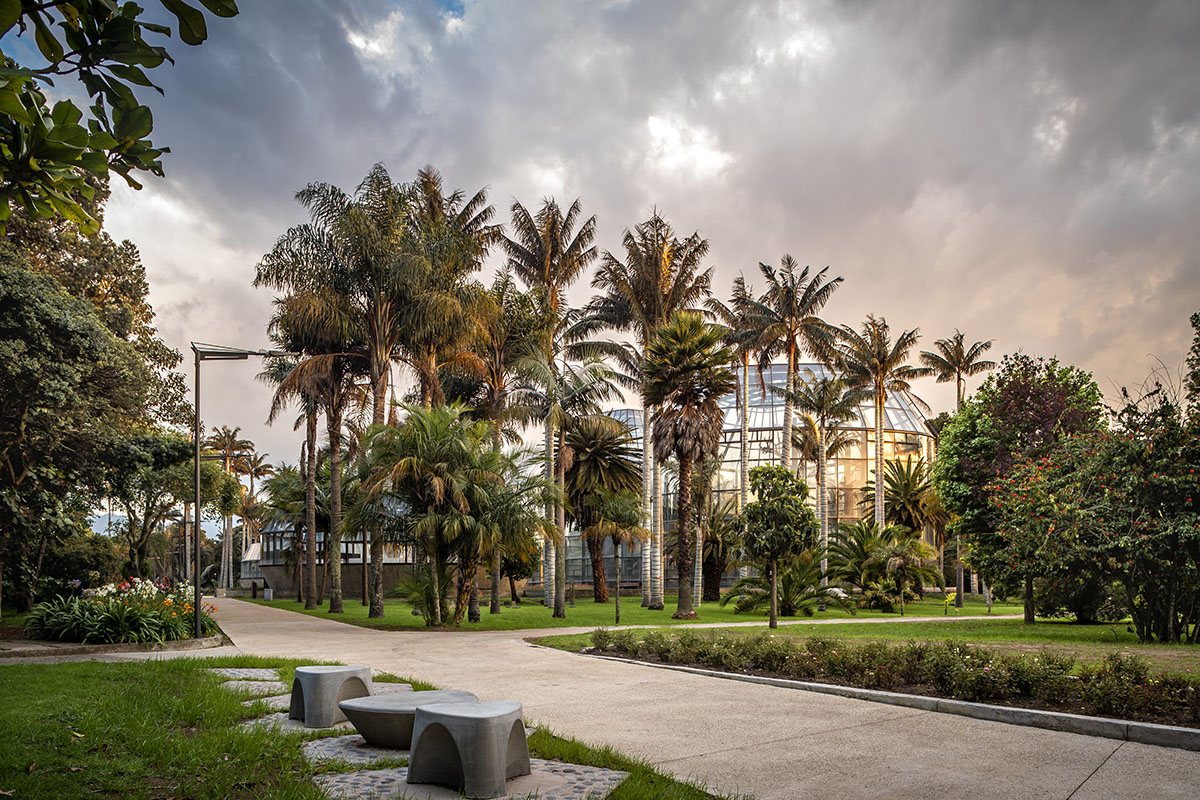
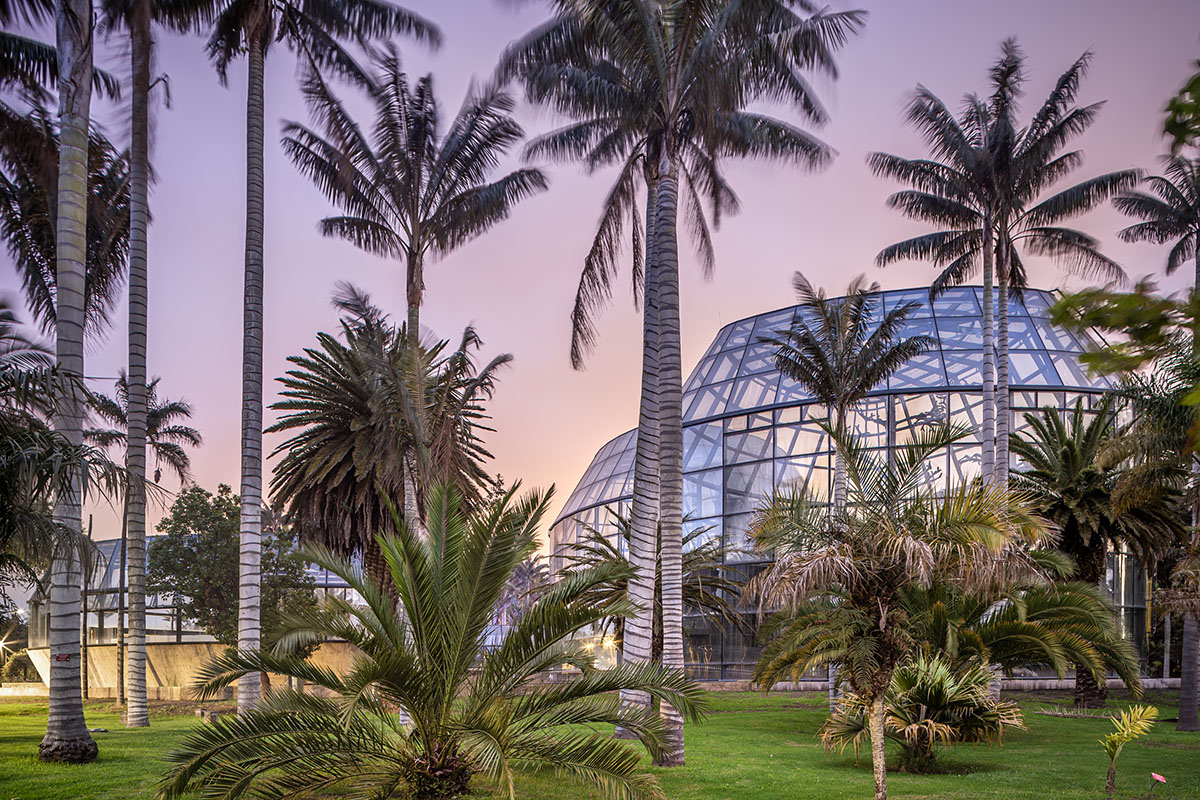
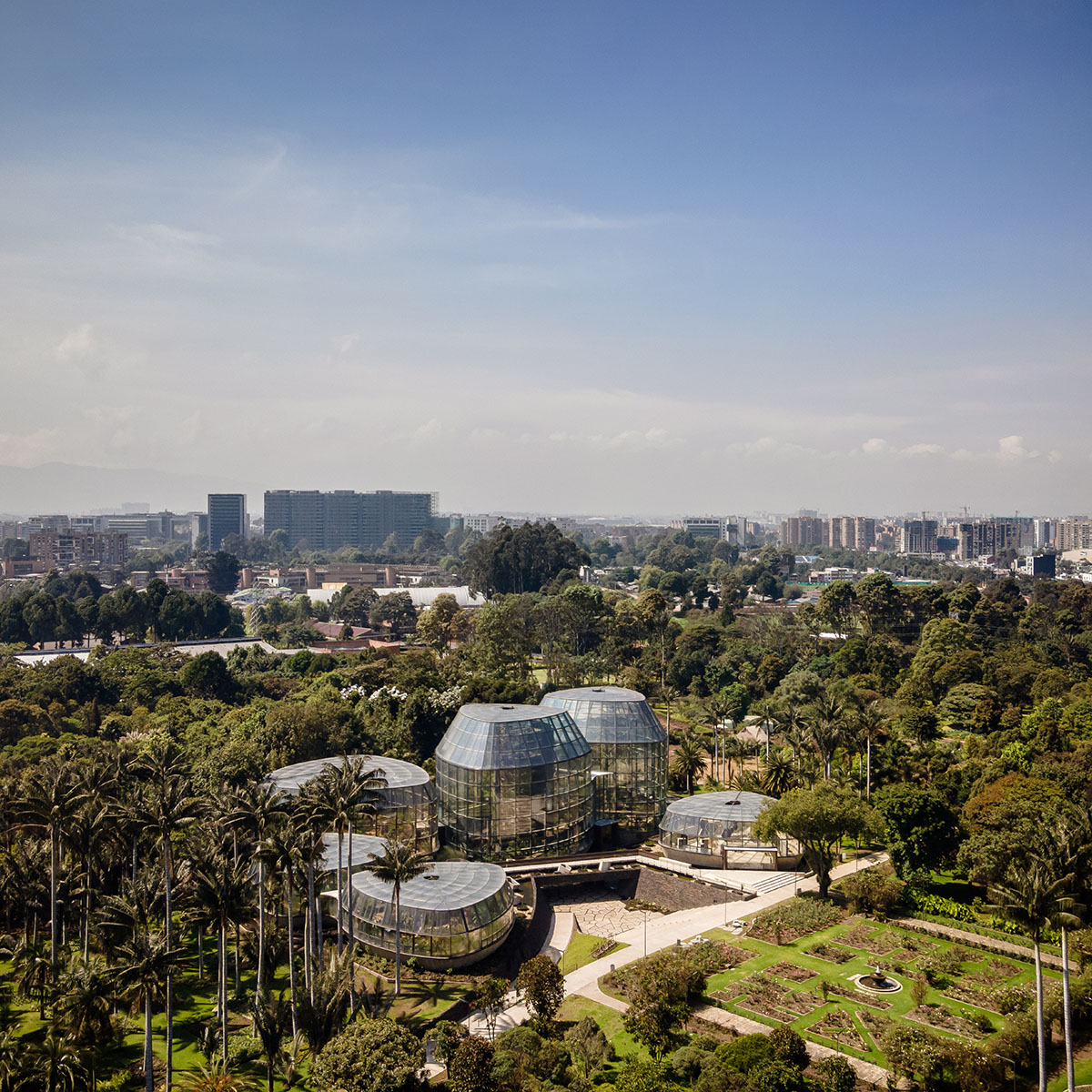
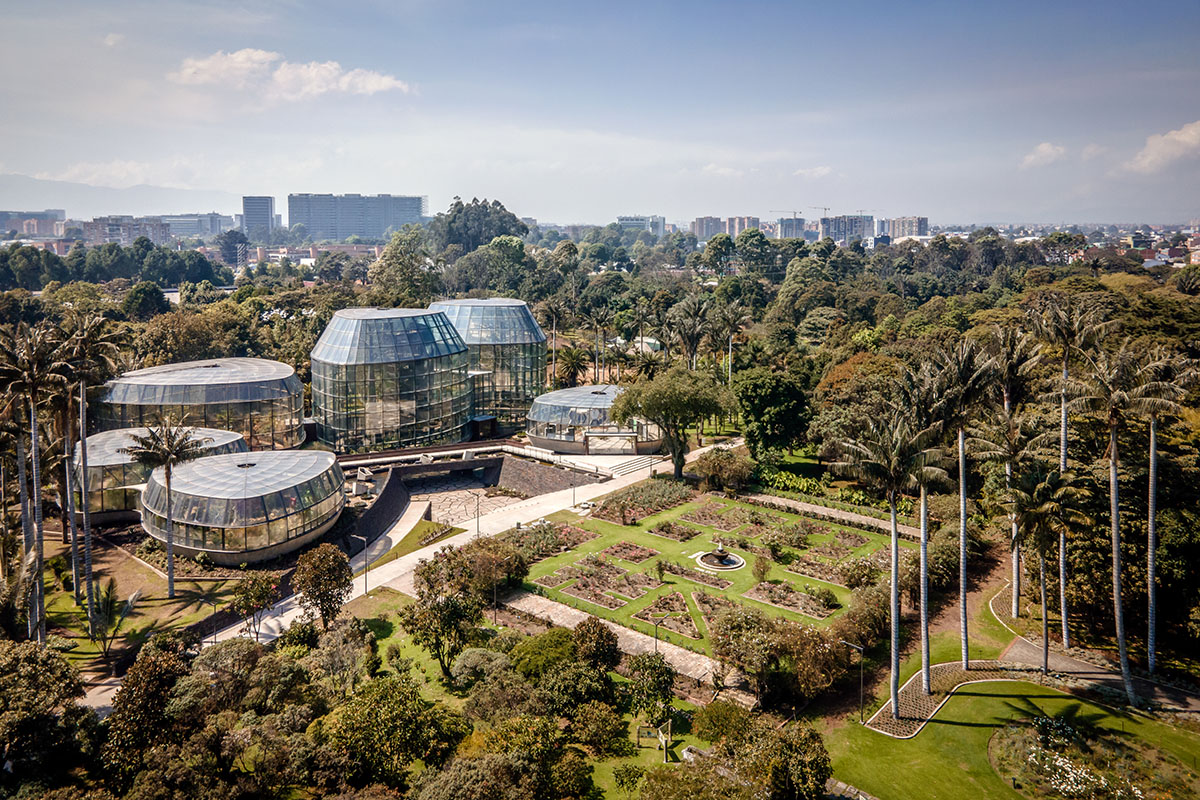
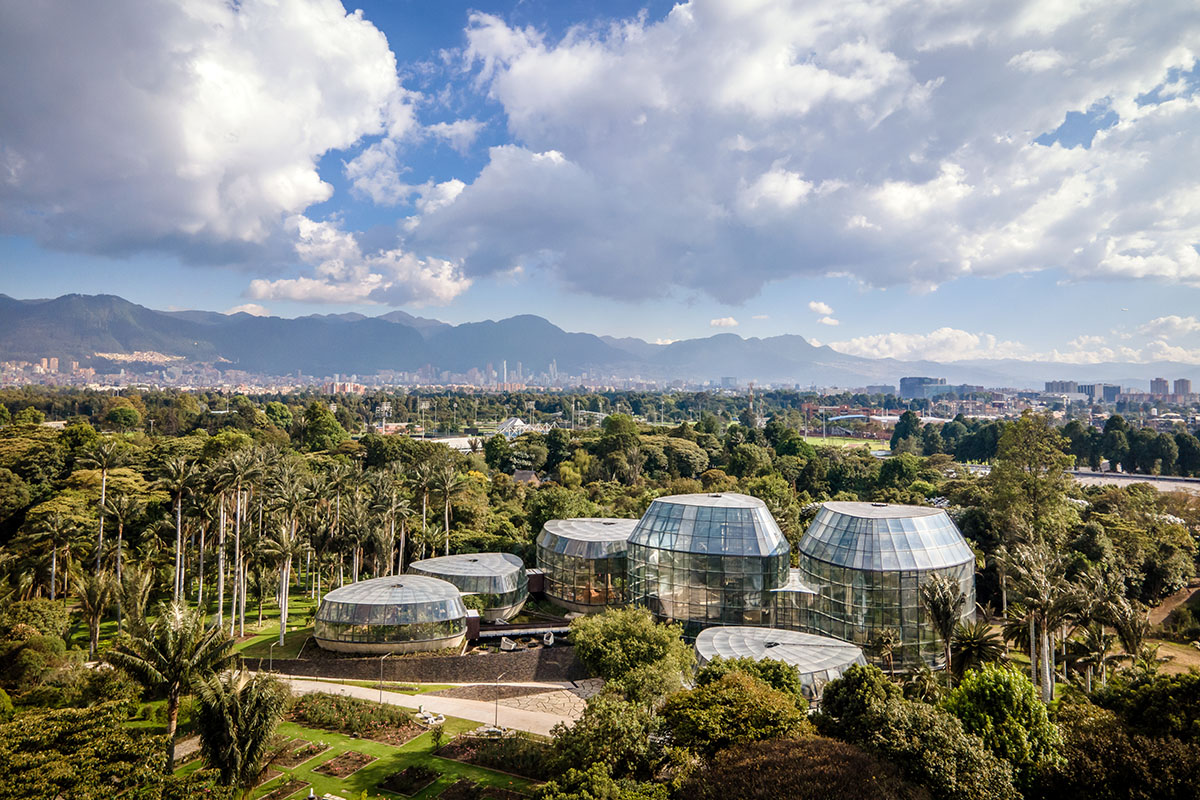
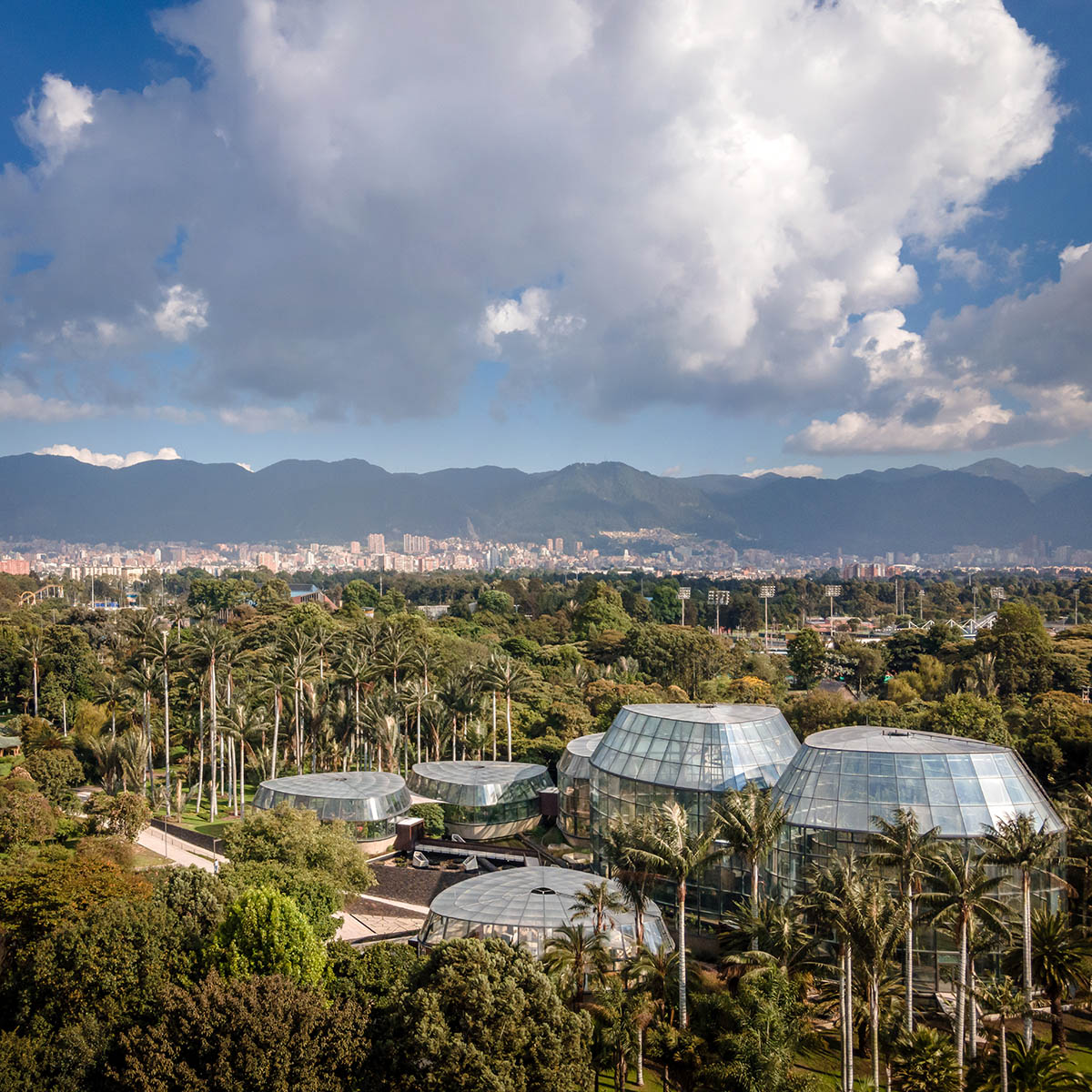
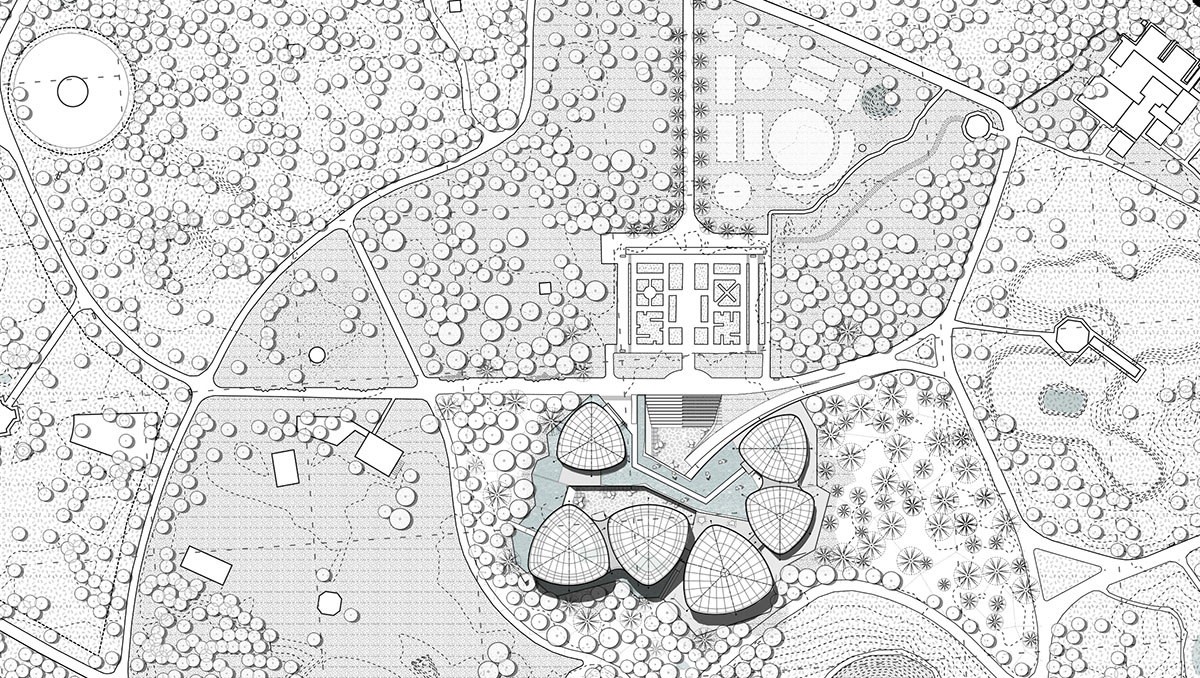
Site plan
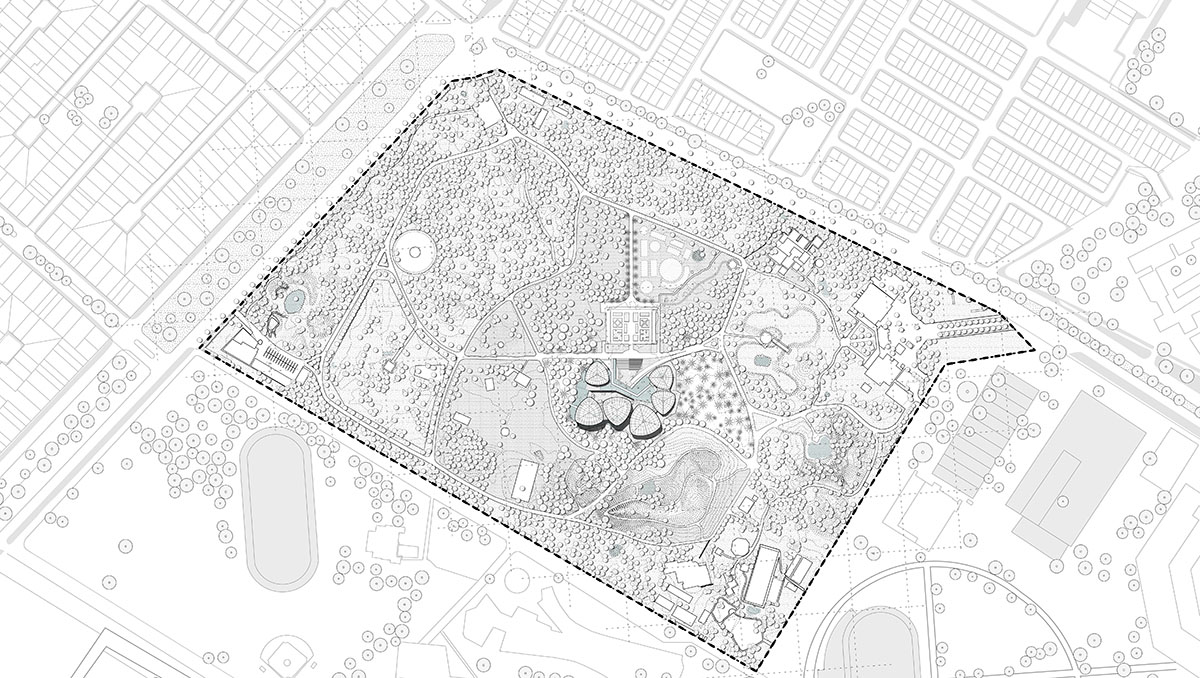
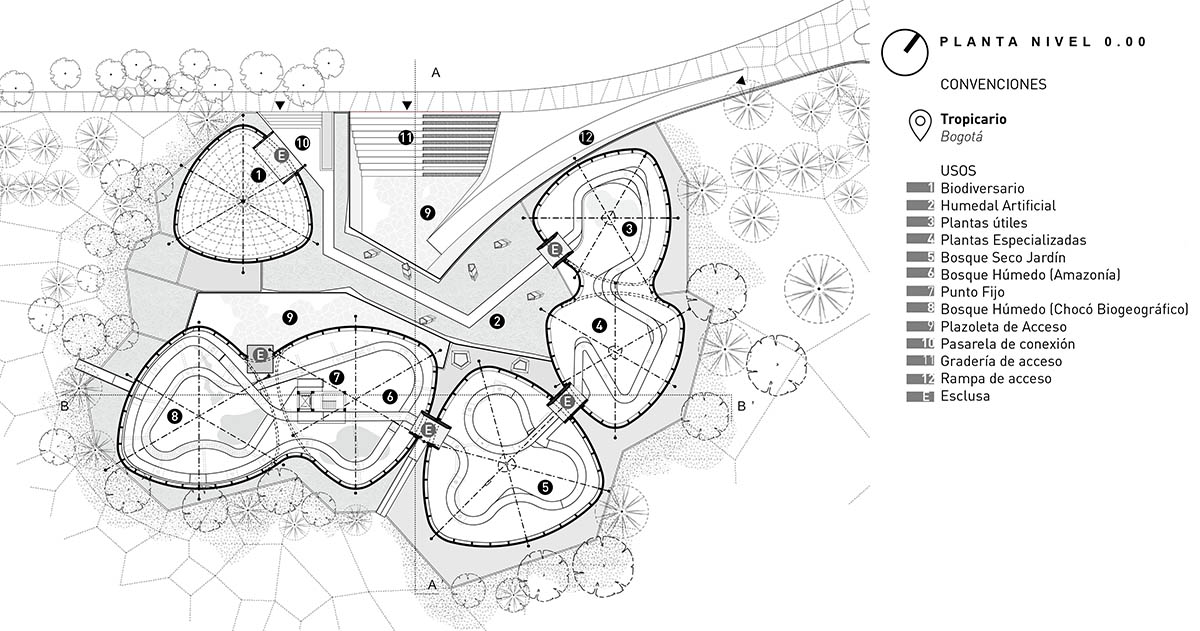
Floor plan
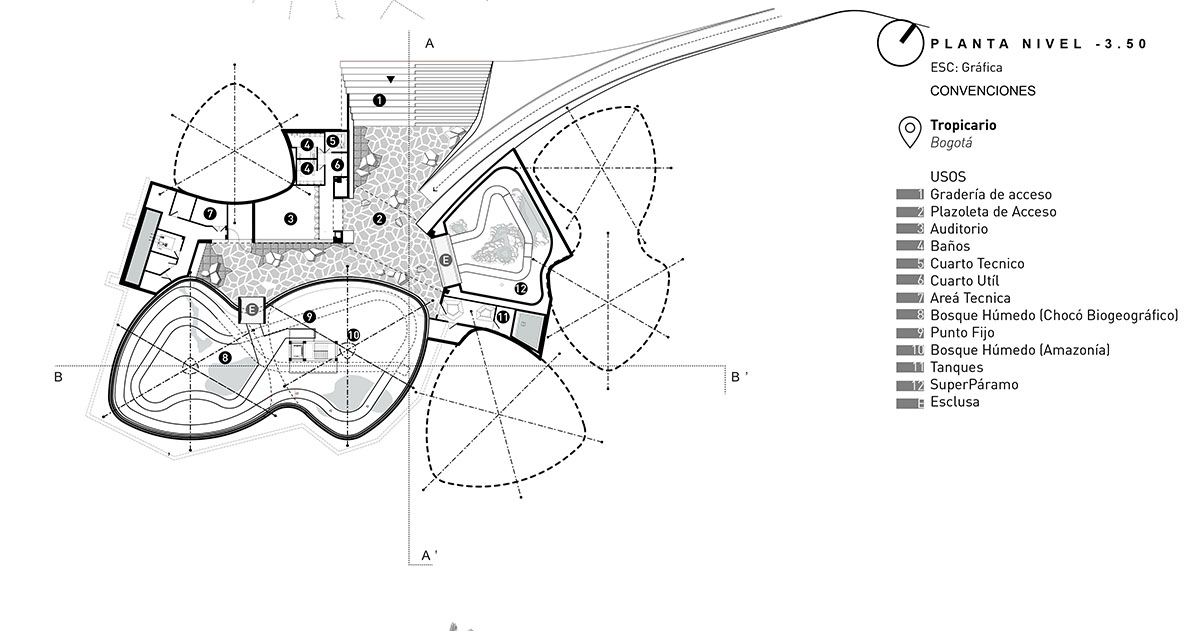
Floor plan
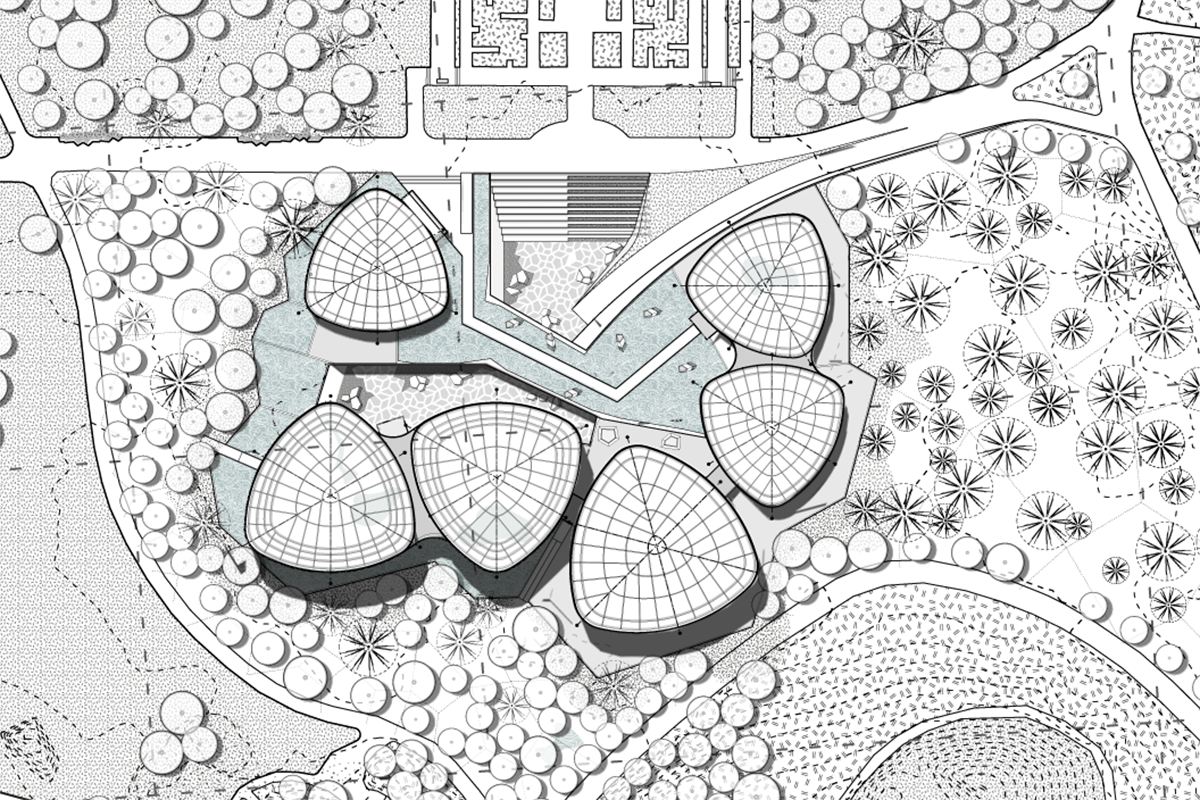
Roof plan
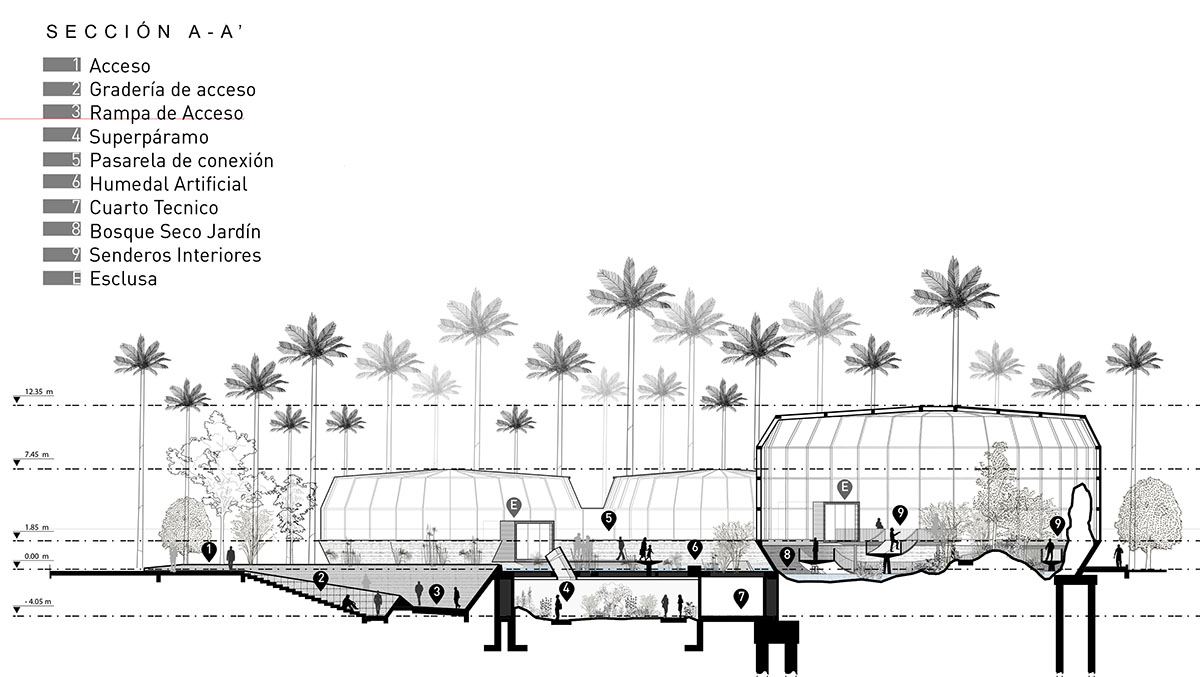
Section
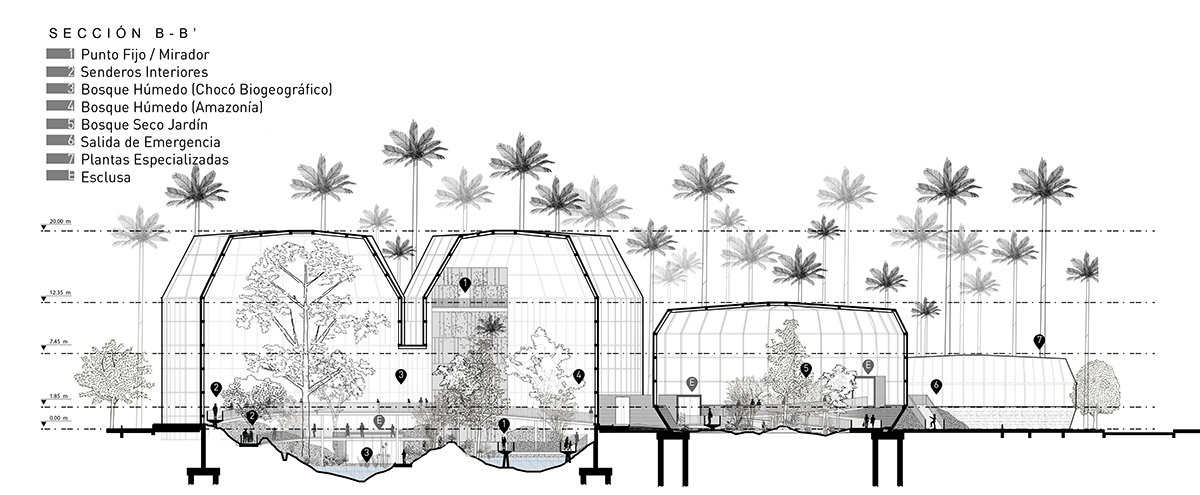
Section
Project facts
Project name: DARP
Architects: DARP (De Arquitectura y Paisaje)
Name of project: TROPICARIO. BOGOTA BOTANICAL GARDEN
Design: DARP (De Arquitectura y Paisaje)
Location: Bogotá, Colombia
Area: 3787 m²
Year: 2014-2021
Lead Architects: Jorge Buitrago, Jaime Cabal
Coordinator: David Carmona
Competition Phase: Melisa Arango, Carlos Andrés Palacio, Sara Olier, Benjamín Gómez, Mateo Agudelo,
Graphic designer: Adriana García
Development Phase: Jamie NG, Teresa Tognetti Bottone, Carlos Andrés Palacio, Cristian Camilo Ríos, Milena Jaramillo, Sebastián Rosas, Héctor Ospina, Mauricio Álvarez, Katherine Agudelo, Adriana García.
Engineering: CNI Ingenieros
Landscape: DARP. De Arquitectura y Paisaje, Jardín Botánico de Bogotá
Museography: Carlos Betancur, Nadia Guacaneme.
Collaborators: SISTEC. Sistemas Integrados De Energía Y Tecnología S A S. / Flux Ingeniería SAS.
Manufacturers: Lafarge Holcim, iGuzzini, , Corpacero, Hunter Douglas, Tecnoglass, Trimble Navigation, Ventanar
All images © Mauricio Carvajal
All drawings © DARP
> via DARP
